 Previous Day |
Waltham, MA → Boston, MA → Waltham, MA 59.0 mi (95.0 km) |
 Next Day |
Give me history, everyone!
Today is going to be packed like a can of beans, with rain on the horizon and so much to see and do, because today, I’m finally heading into greater Boston via my first national park of the day: Adams National Historical Park!
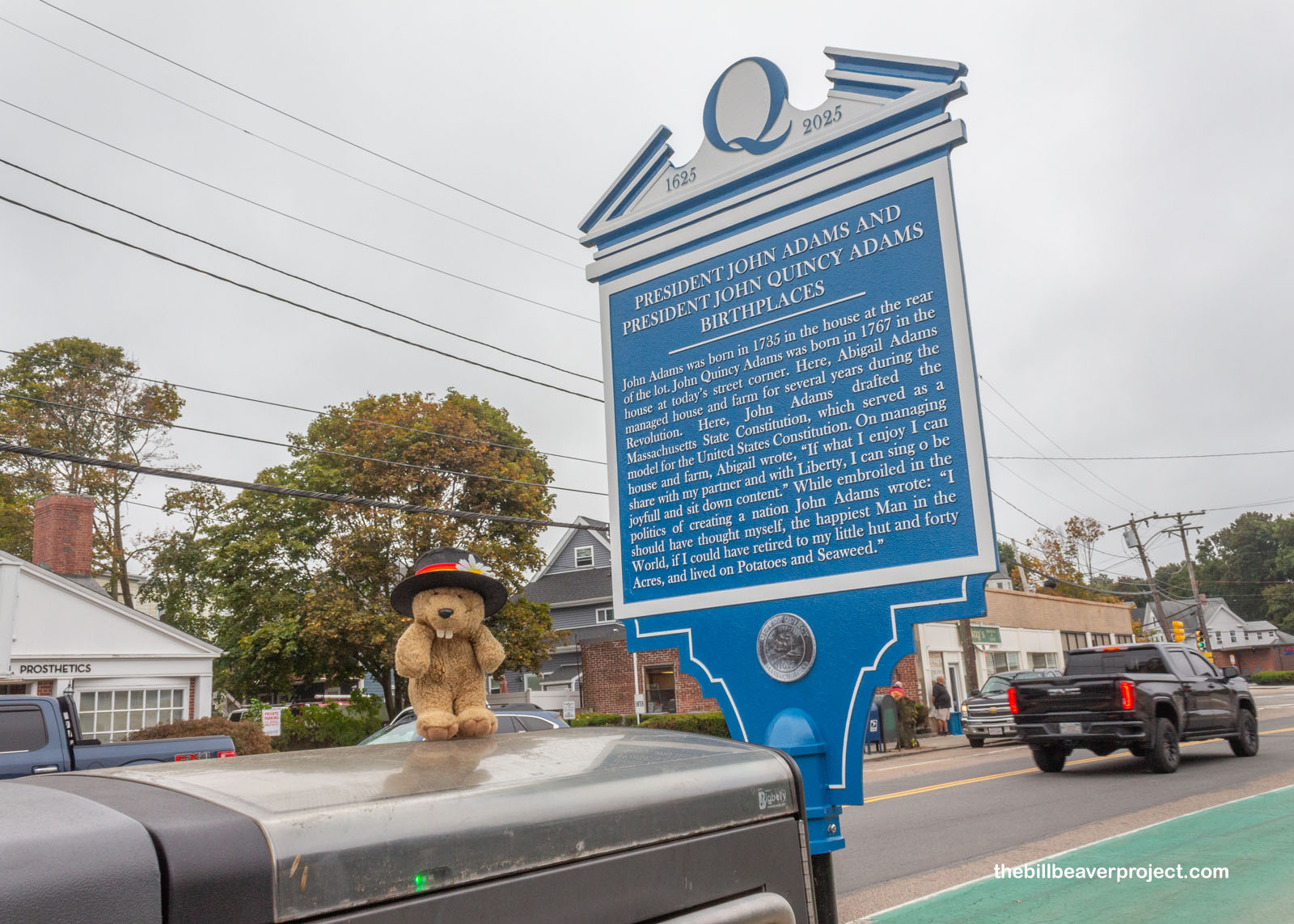 |
Here, on the former Old Coast Road connecting Boston to Plymouth stand two important houses! In the house on the left, future second president, John Adams, was born on October 30, 1735! In the house on the right, his son and future sixth president, John Quincy Adams, was born on July 11, 1767! Between those significant dates, this was where the senior Adams practiced law and worked with Samuel Adams and James Bowdoin to draft the Massachusetts State Constitution, the model for the later United States Constitution!
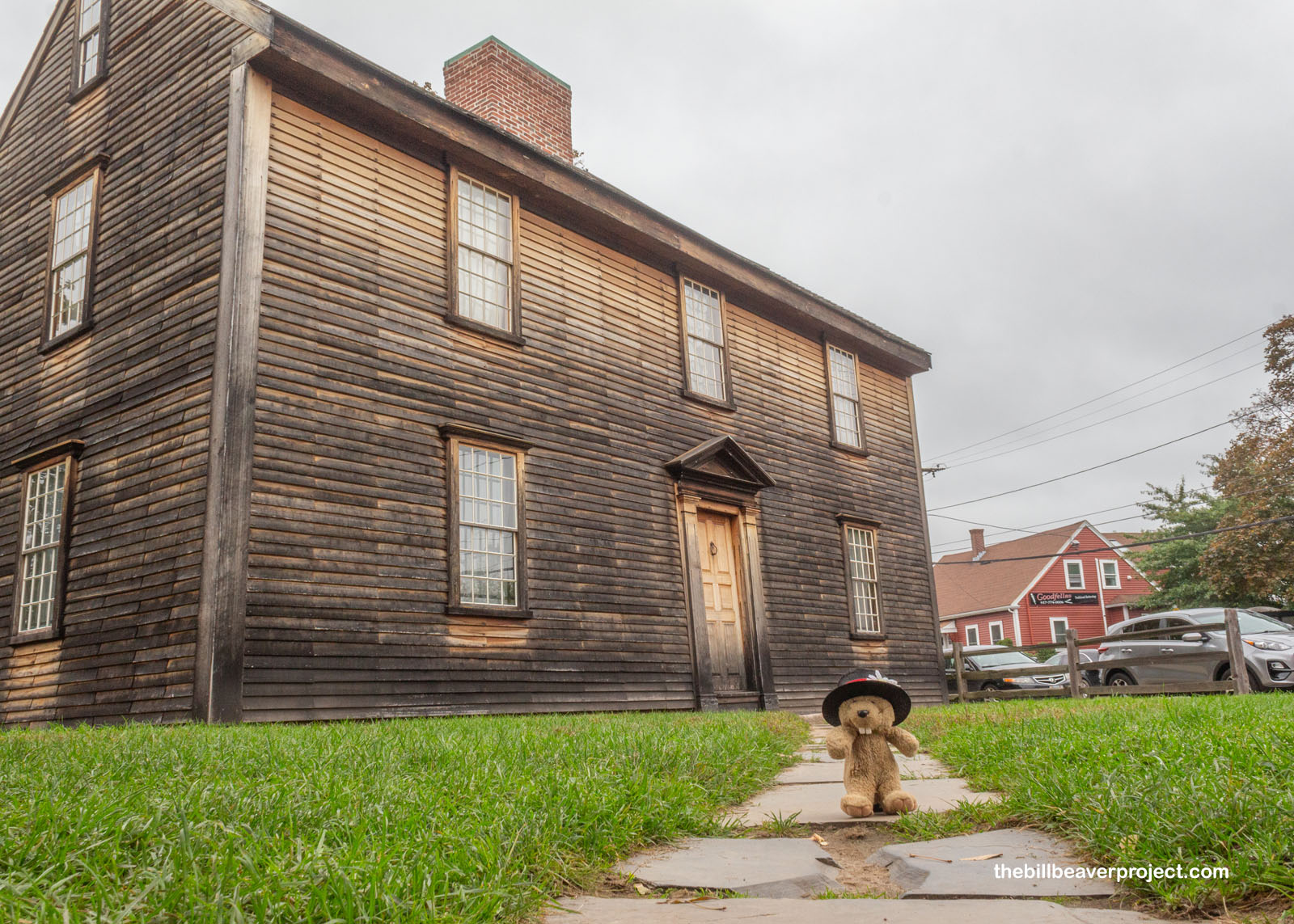 |
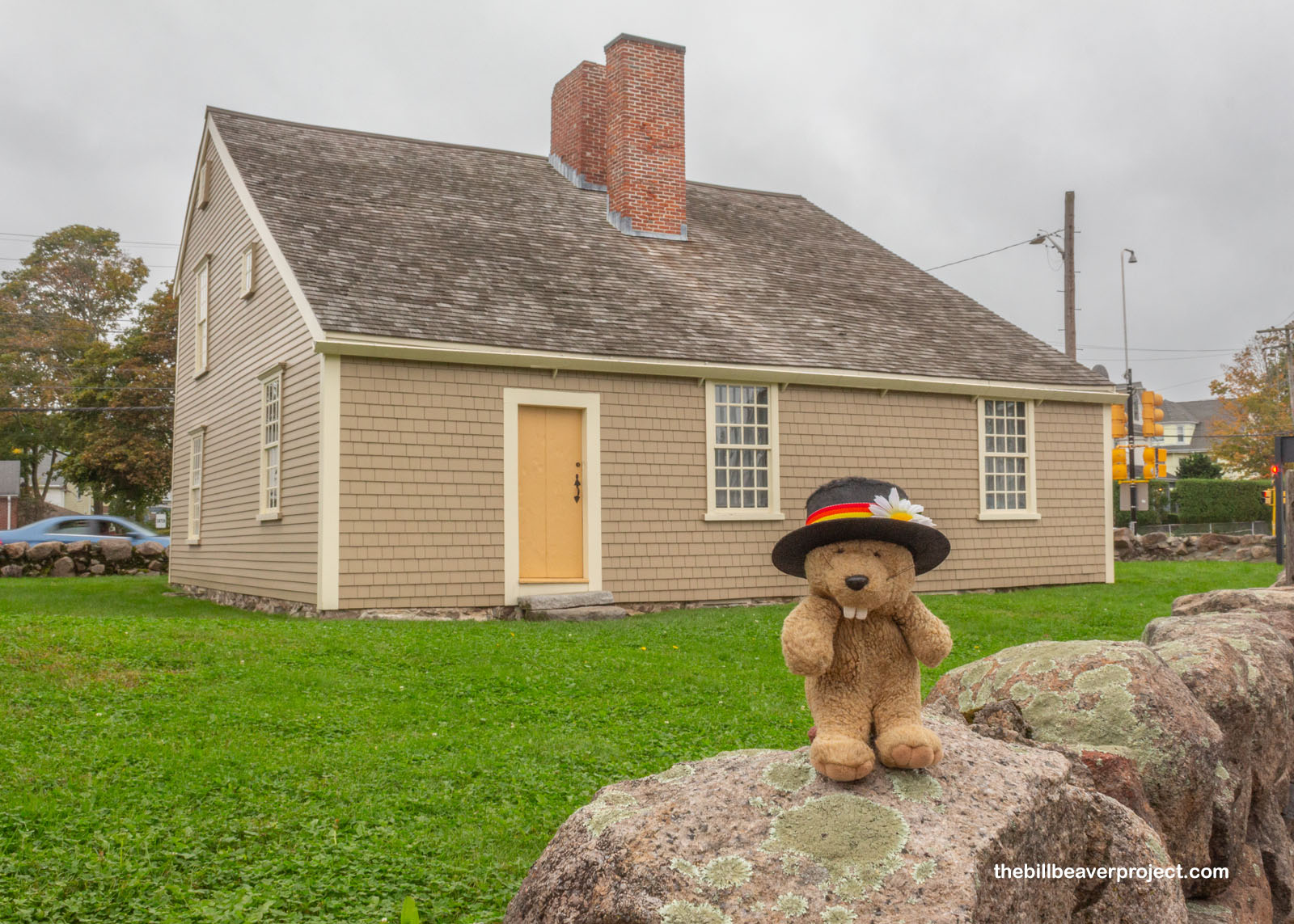 |
Strolling north of this site to the next unit of the park, I spotted some statues of John and Abigail Adams, famous for their many, many letters to each other during the Revolution. Surprisingly, she wasn’t his first choice! She was his third cousin and nine years his junior, but after five years of sharing a love of books and communicating with each other frequently, they were married on October 25, 1764, despite resistance from Abigail’s mother!
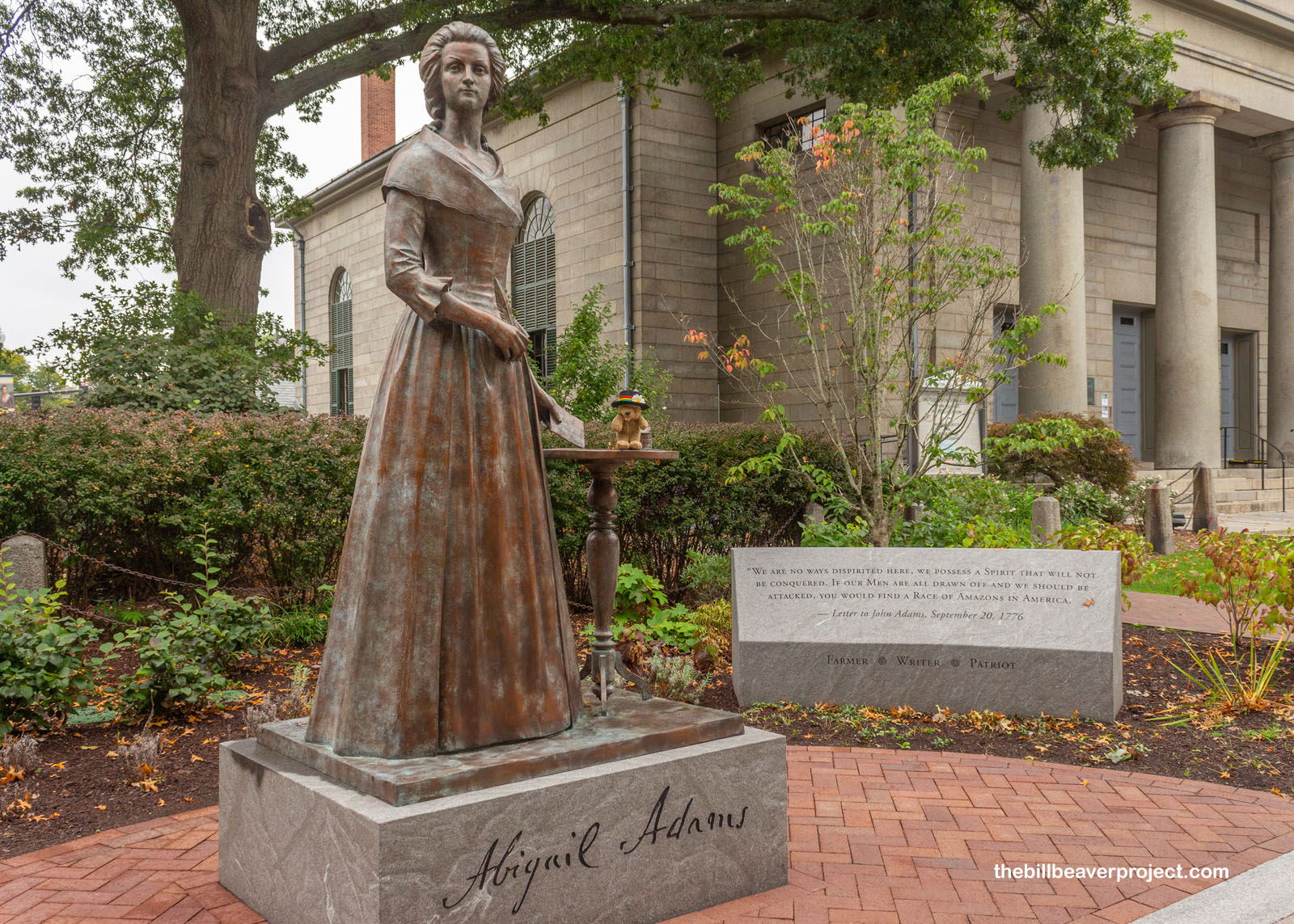 |
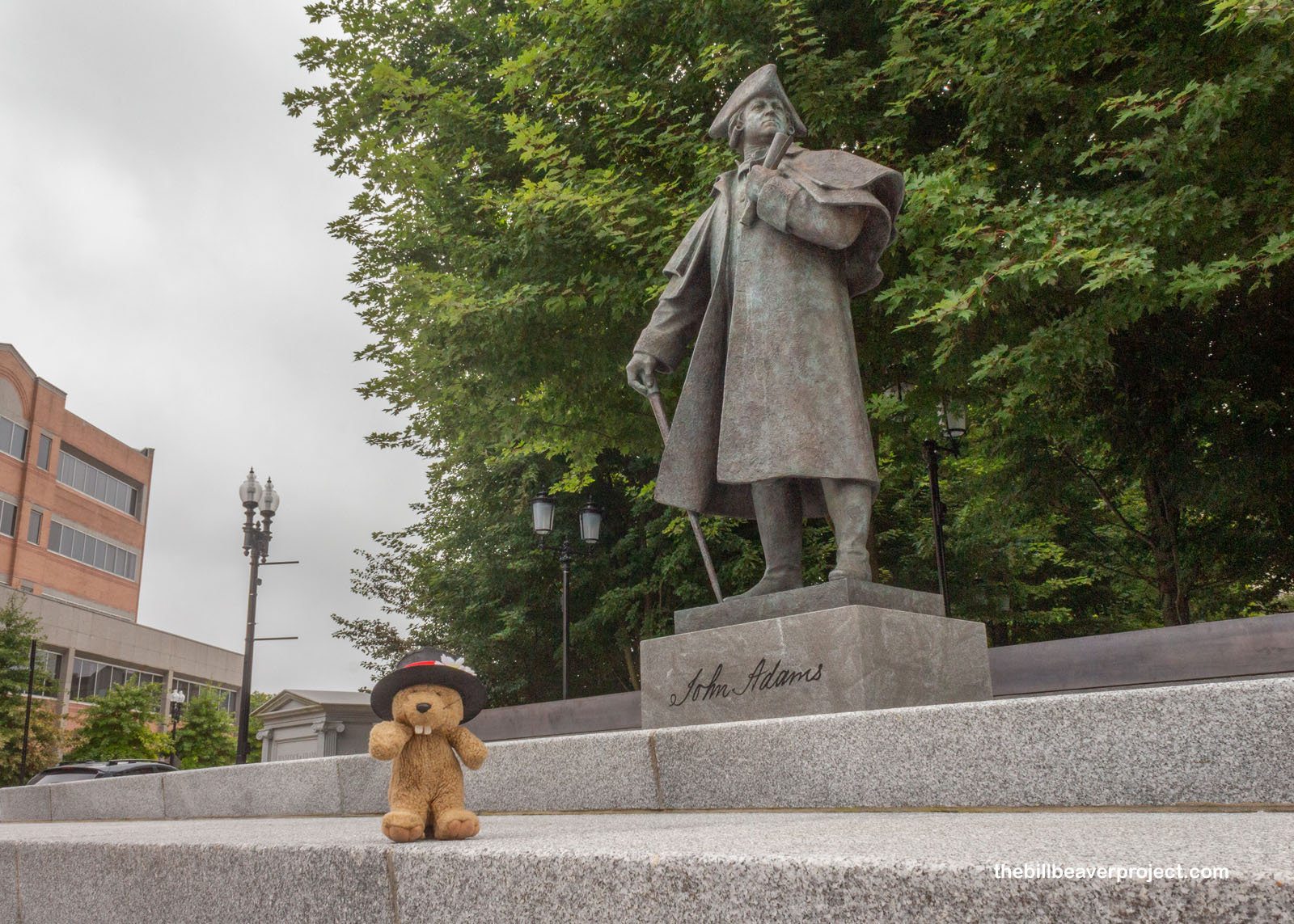 |
Their lives spanned here together, and today, both Adams couples, senior and junior, are buried here at United First Parish Church. Founded by Puritans in 1636, this church was the heartbeat of the budding town of Braintree! It was here that John Hancock, father of the Founding Father (Founding Grandfather?) worked as minister from 1726 to 1744!
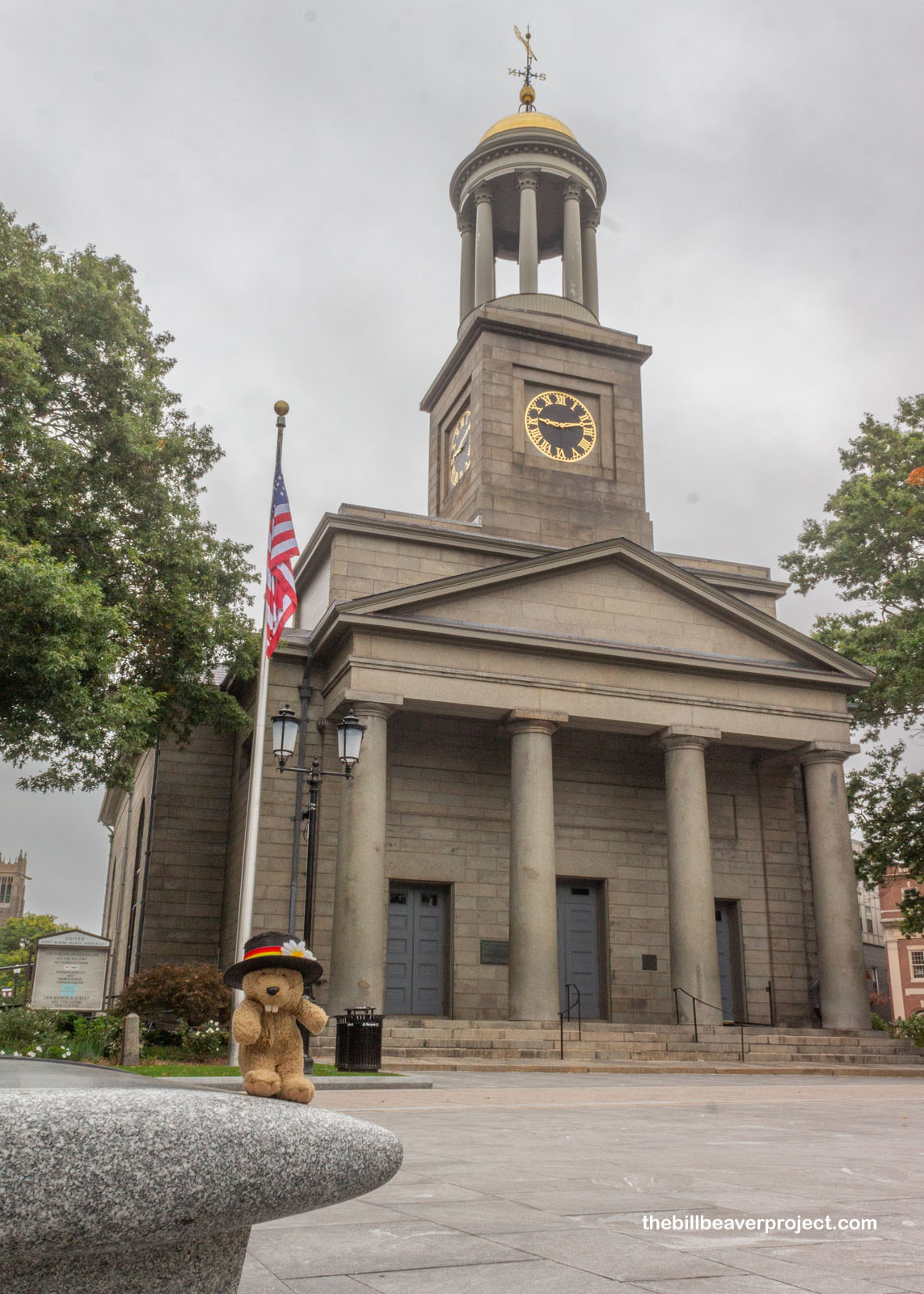 |
And sure enough, after a few more steps, I was standing in front of the birthplace of John Hancock, president of the First Continental Congress, and Massachusetts’ first freely elected governor! His home no longer exists, but in 1822, John Adams set aside the site of the Hancock home for an academy to be built in his honor! It took a little while to complete the building, which didn’t open until 1872, but it remained active as Adams Academy for a good thirty-five years!
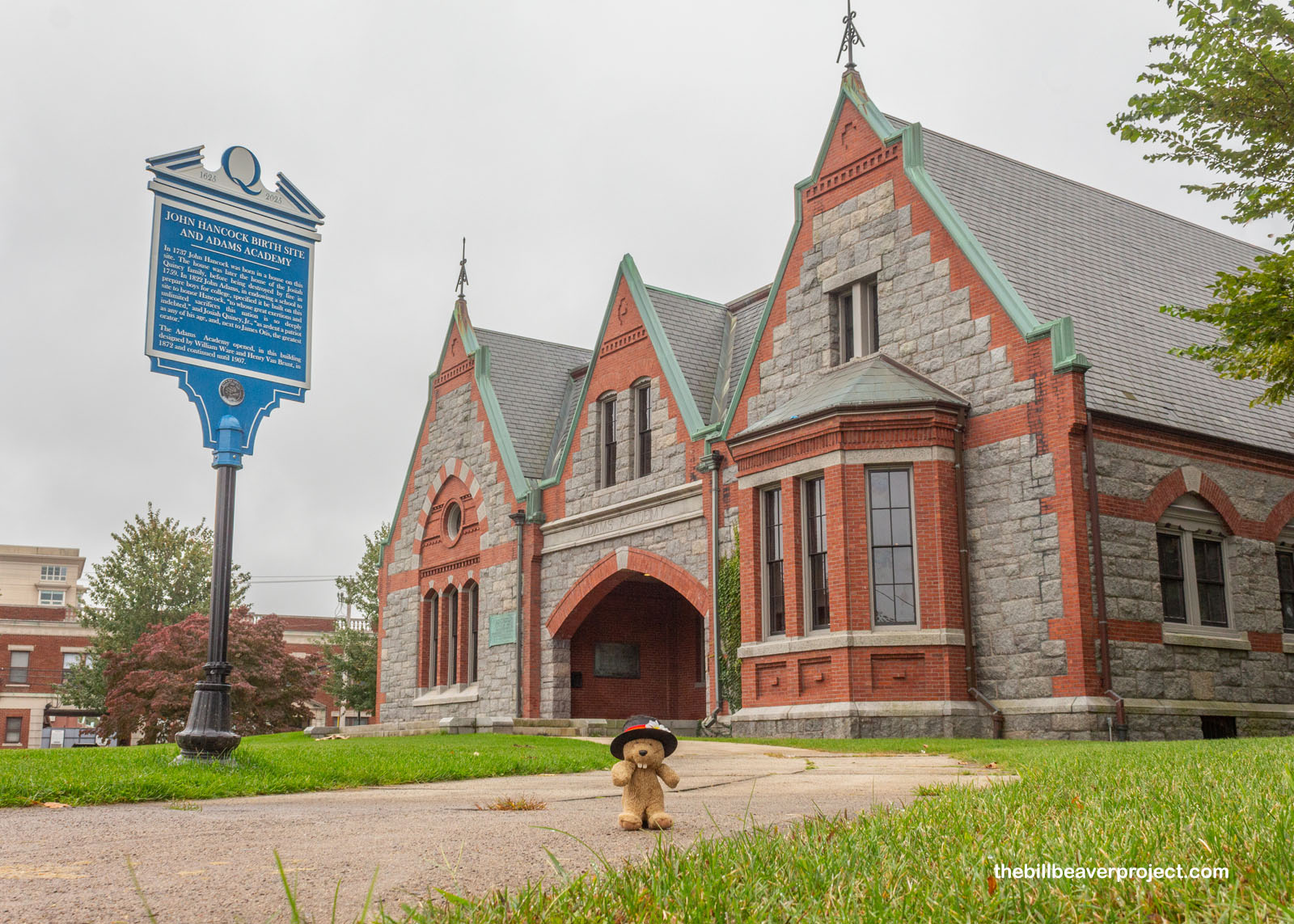 |
So I’d visited the first and final resting places of the Adams Family, but what about the middle? John and Abigail had six children between 1765 and 1777, and they needed some room to raise them! By that time, they had 6 years of Revolutionary War ahead of them, plus five more of ambassadorship abroad, but when the family returned from Europe in 1788, they settled on to this farm, which came to be called Peace Field, in honor of the peaceful years following the War!
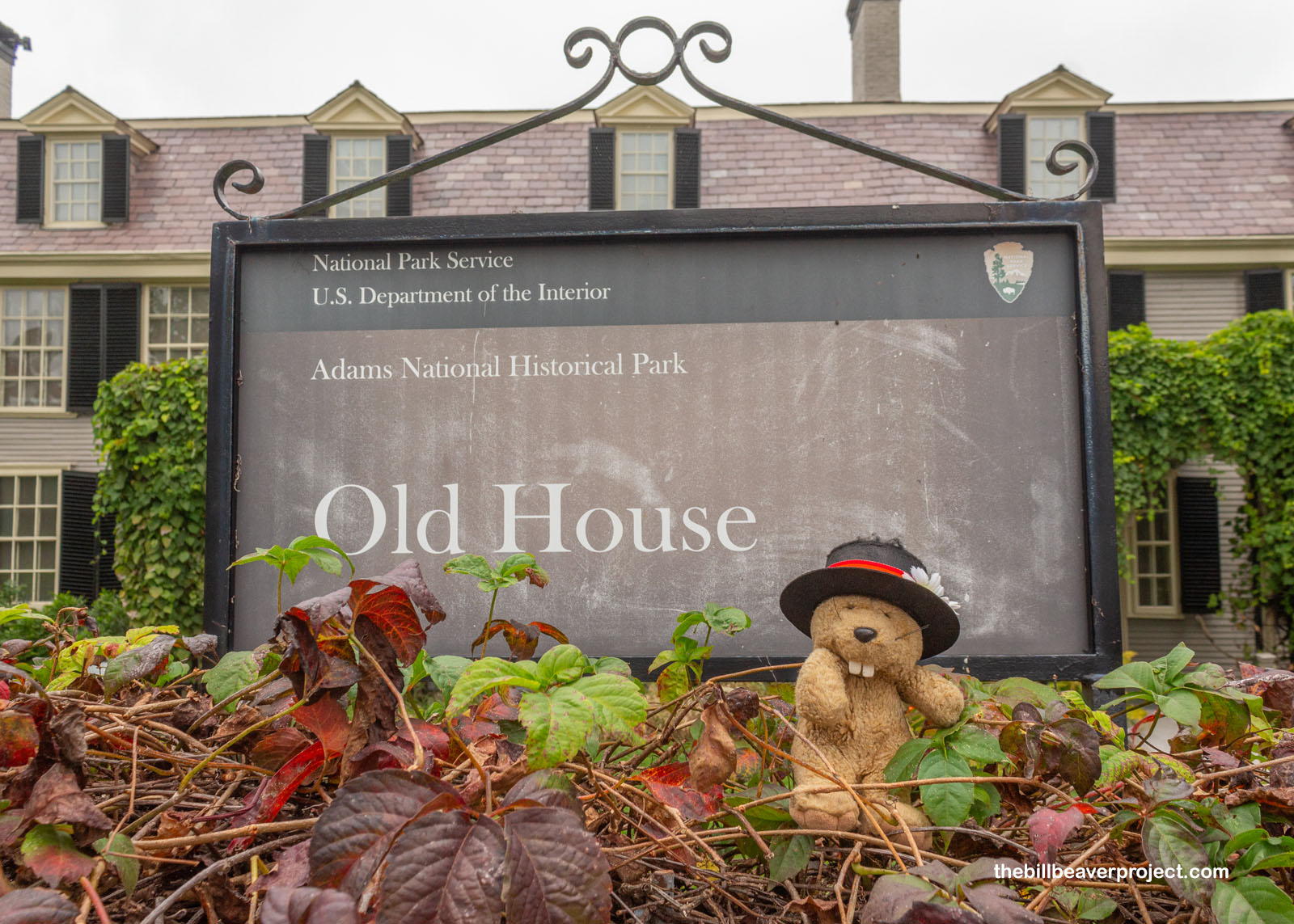 |
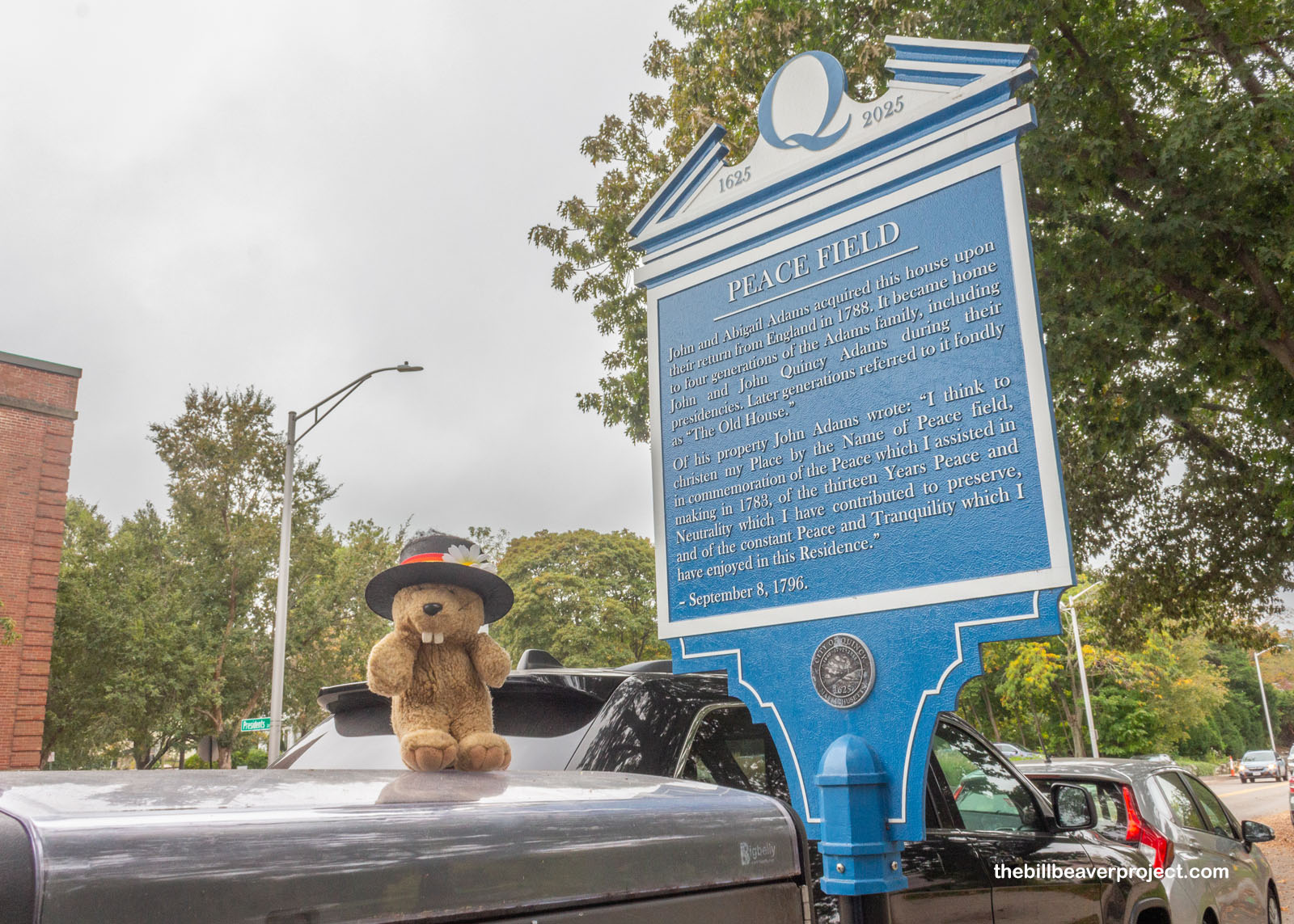 |
Today, the “Old House” and nearby Carriage House are still standing, with some additions! After all, four generations of Adams descendants called this place home, and they carried on their patriarch’s love of books with a Stone Library added on to the house in 1873 under Charles Francis Adams, who was also the Minister to Great Britain during the Civil War!
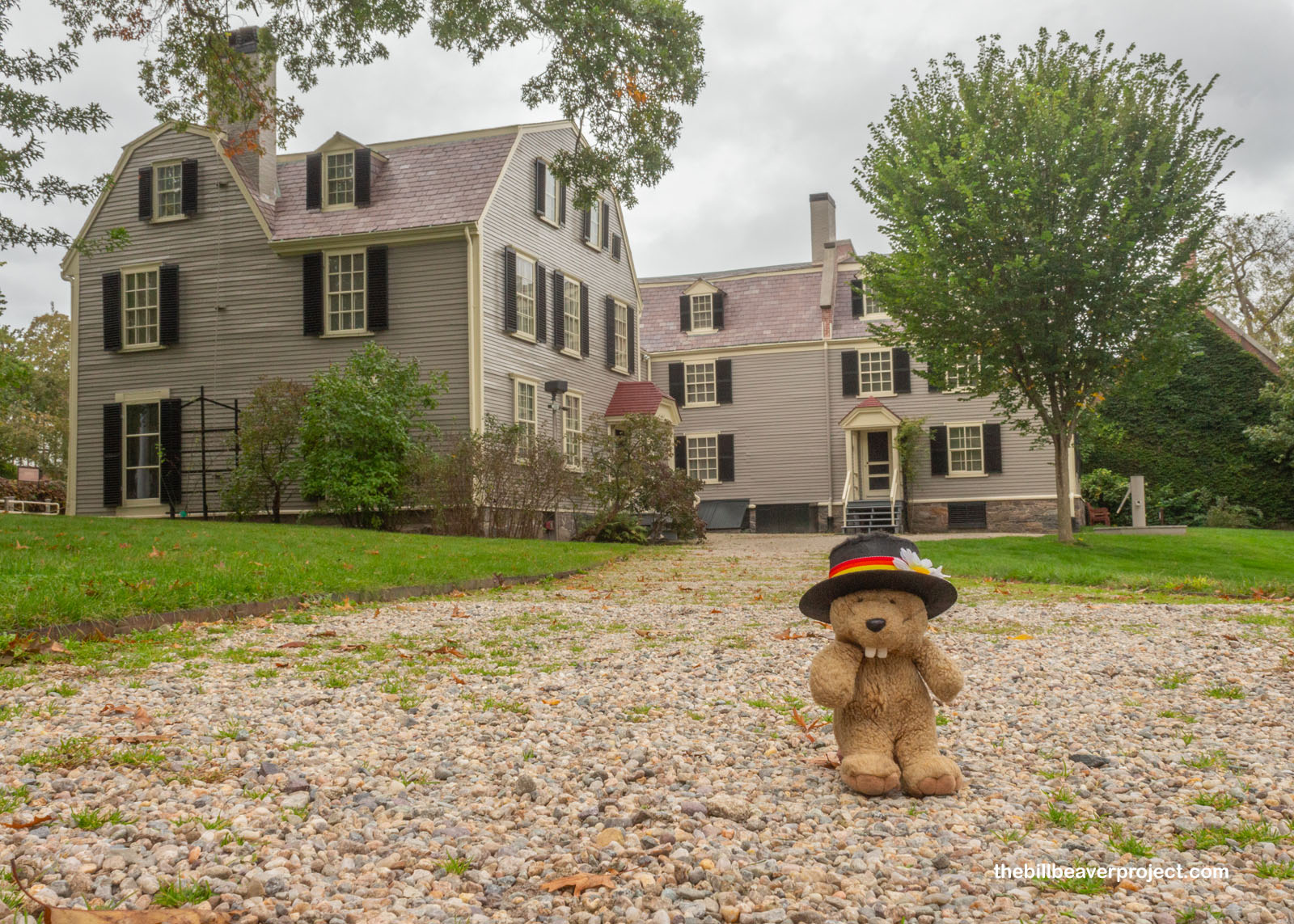 |
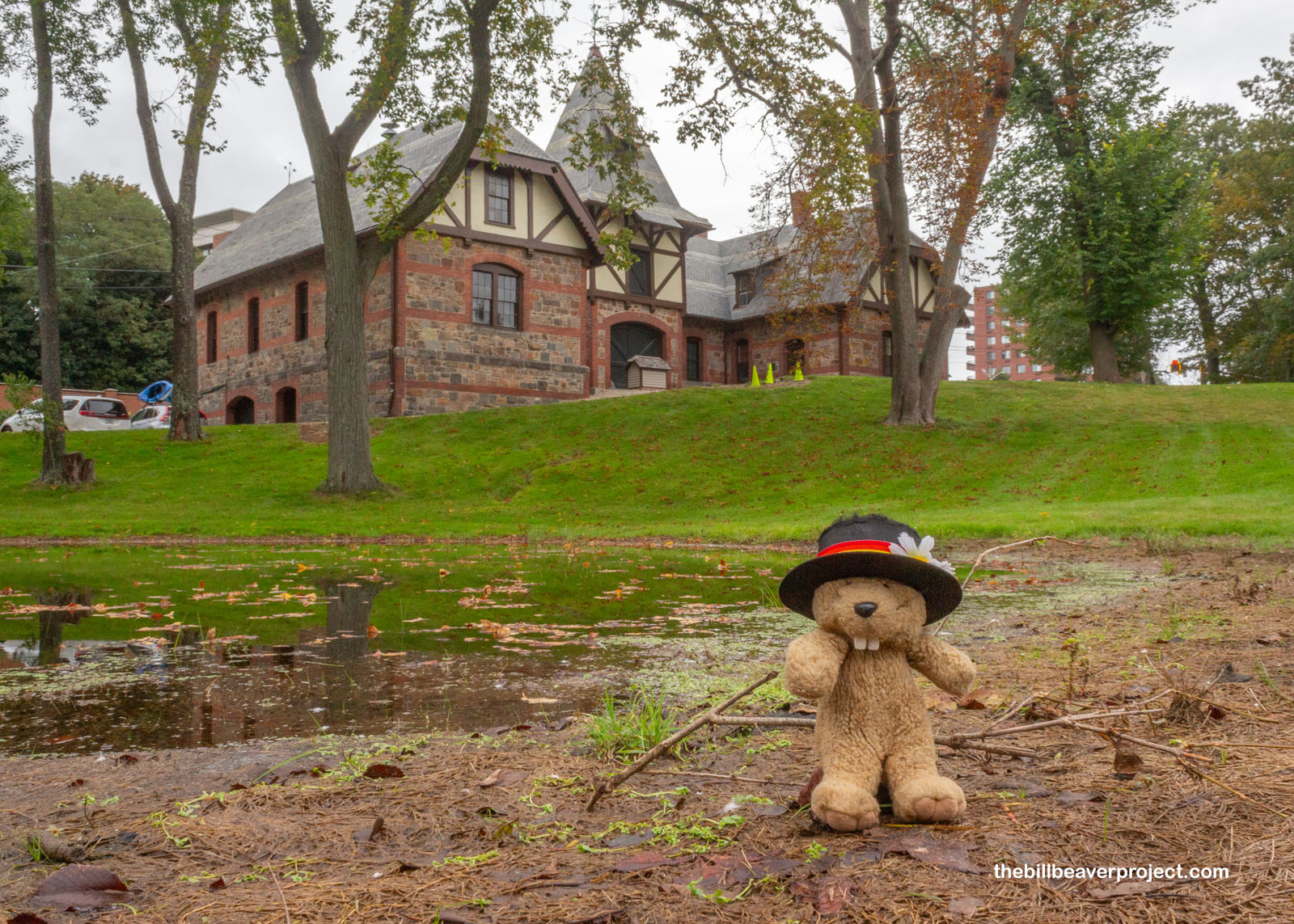 |
The house is still surrounded by a formal garden with wisteria, roses, and boxwood, just like the ones I saw at Mount Vernon! The mosquitoes weren’t letting me stay put for too long, so I had to keep moving!
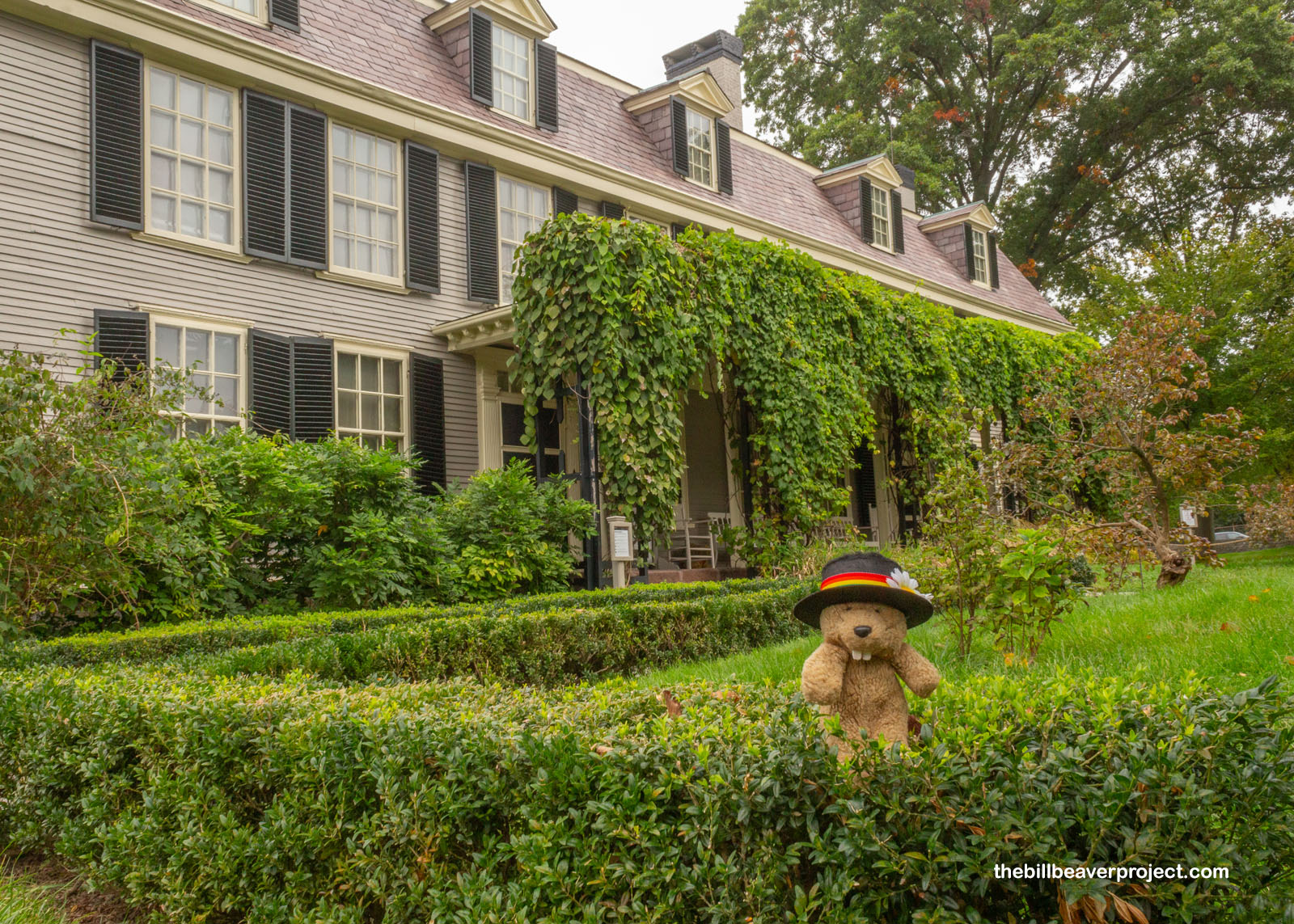 |
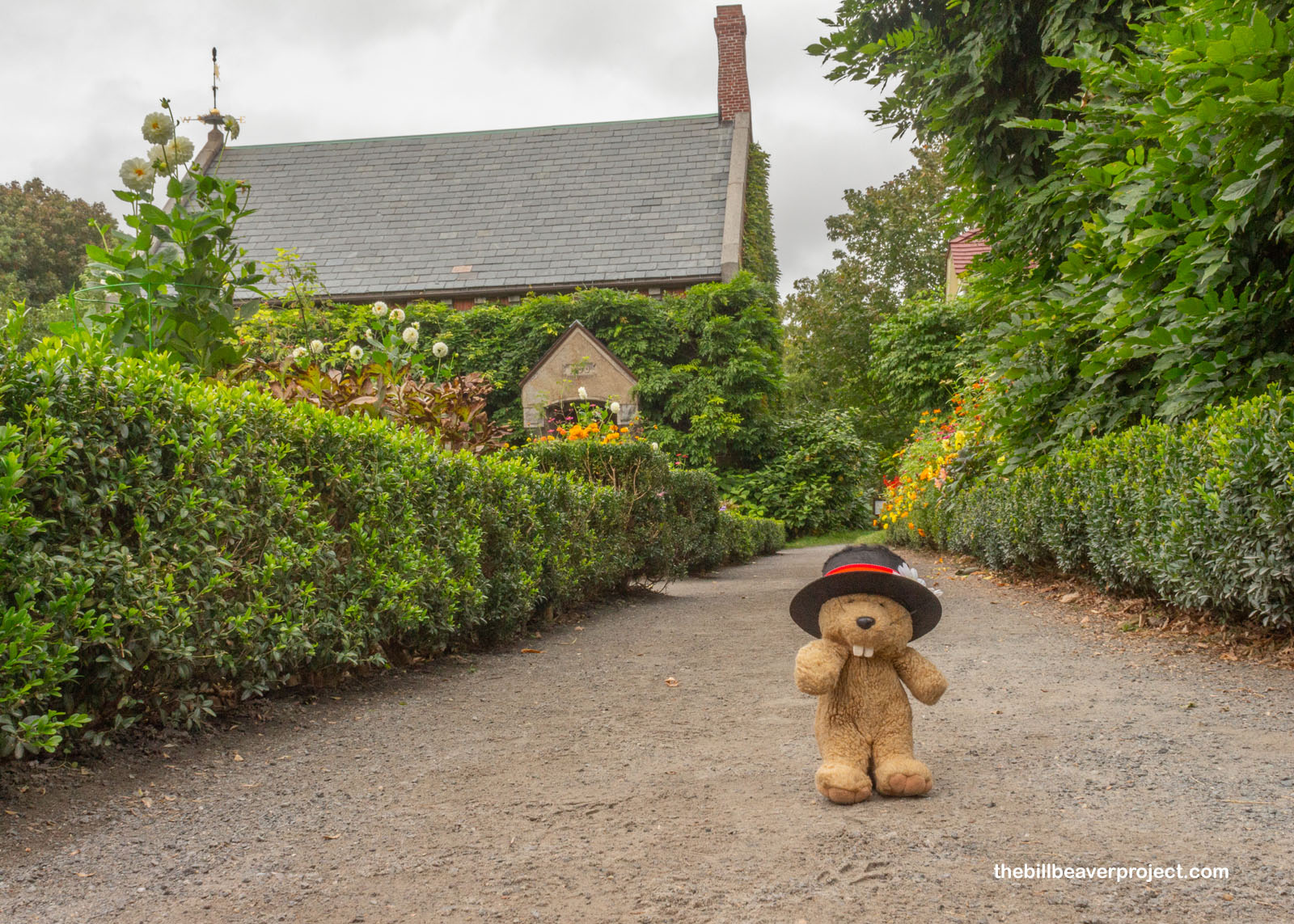 |
But I did stop just long enough to marvel at a very old rose bush! Planted by Abigail Adams the year the family moved into Peace Farm, this Yorkist rose is 235 years old and still blooming! Well, I mean, technically it was fruiting when I was there, but that’s just the sequel to blooming!
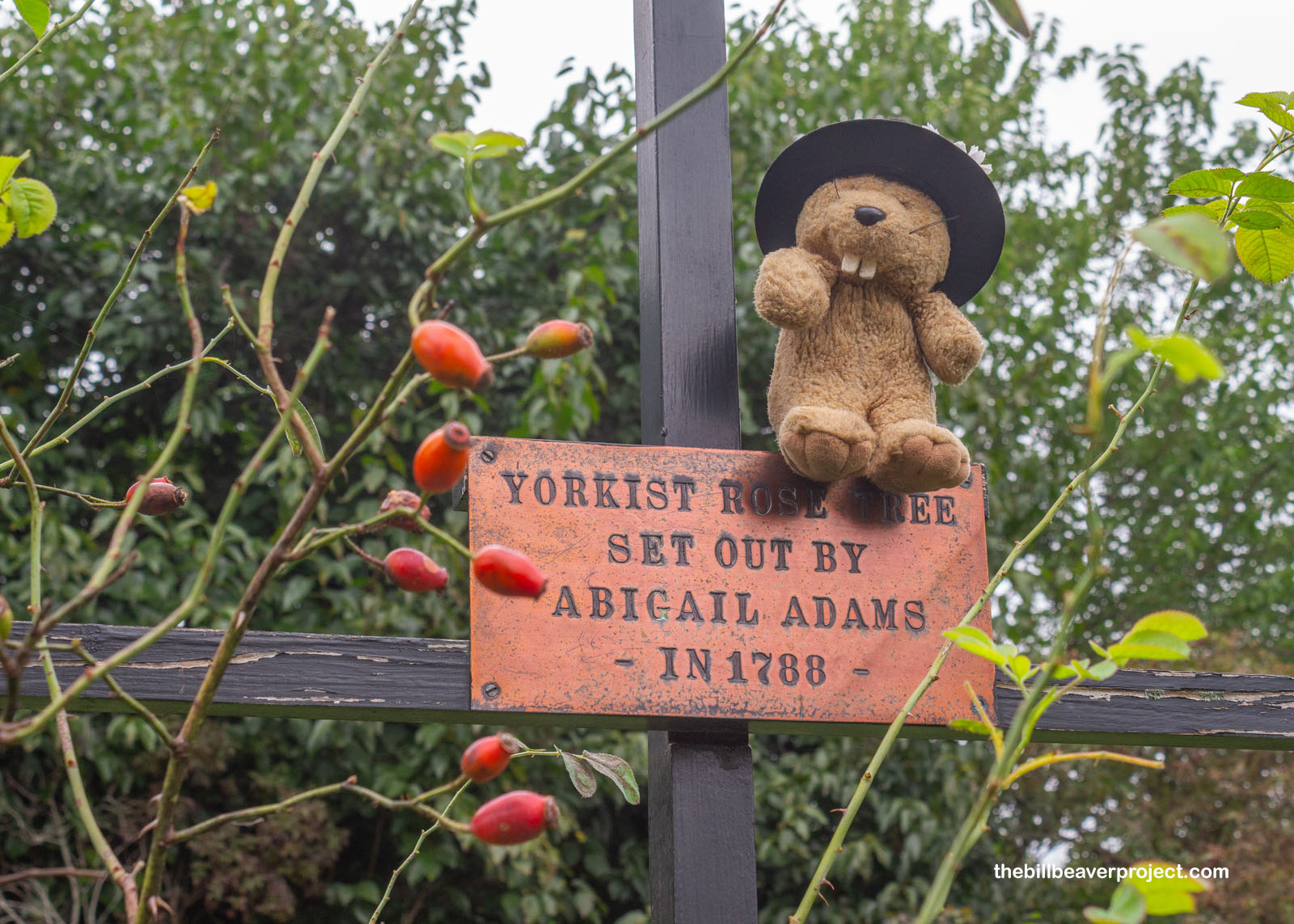 |
At last, I boarded the Red Line north into Boston, having learned the hard way on Monday that driving into the city just isn’t practical! But this was no easy task either! Construction had split up the line just a few stops north of Quincy, which meant leaving the metro station to hop on a bus to go the next few stations to get back on the metro and then, at last, emerge from the depths into the overcast light of historic Boston Common!
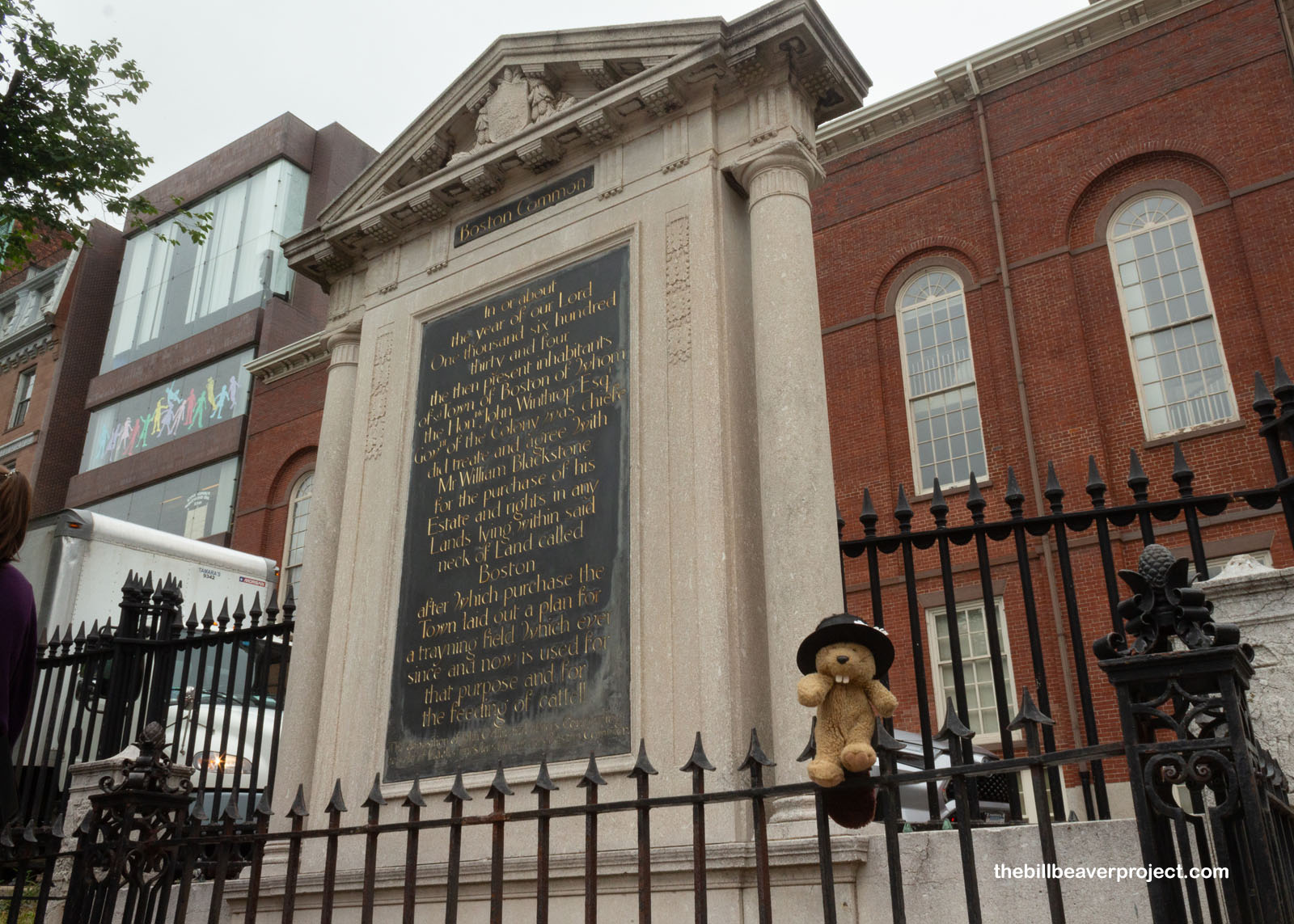 |
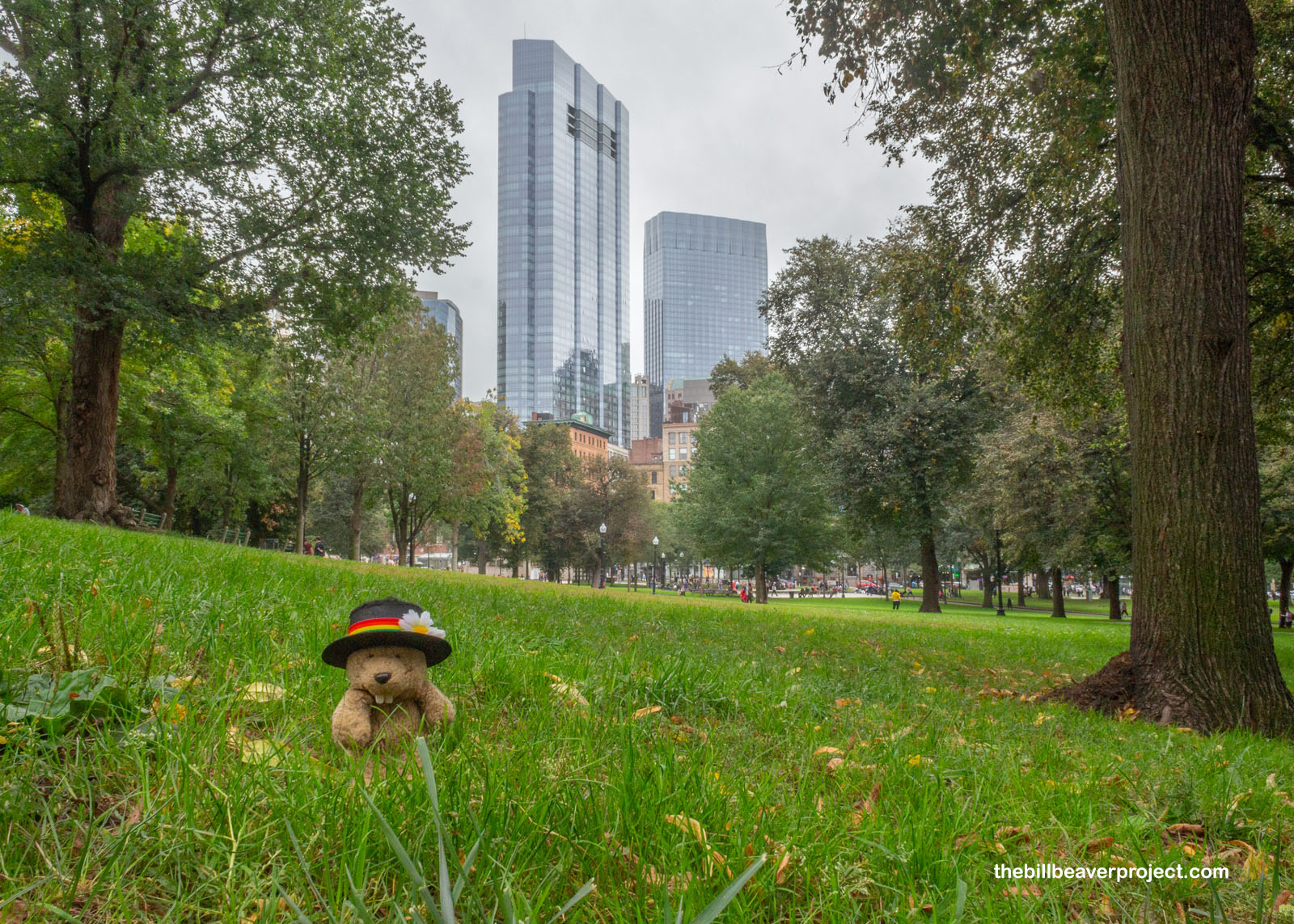 |
This is, in many ways, the birthplace of Boston! As you know, the city was founded by Puritans in 1630, and within four years, this green space was installed for livestock use (it wasn’t until 1915 that Frederick Law Olmsted’s sons gave it a makeover). Here, the British redcoats camped for eight years from 1768 until 1776, and subsequently, this was where the Colonial militia assembled to ultimately kick them out for good! The Common has seen Civil War recruitment, World War I victory gardens, anti-Vietnam war protests, and even a Civil Rights rally by Dr. Martin Luther King, Jr! But it hasn’t all been warfare! Starting in 1862, this was home to the Oneida Football Club, America’s first, and on the day I was there, it was chock-full of festivities for the Boston 10K for Women!
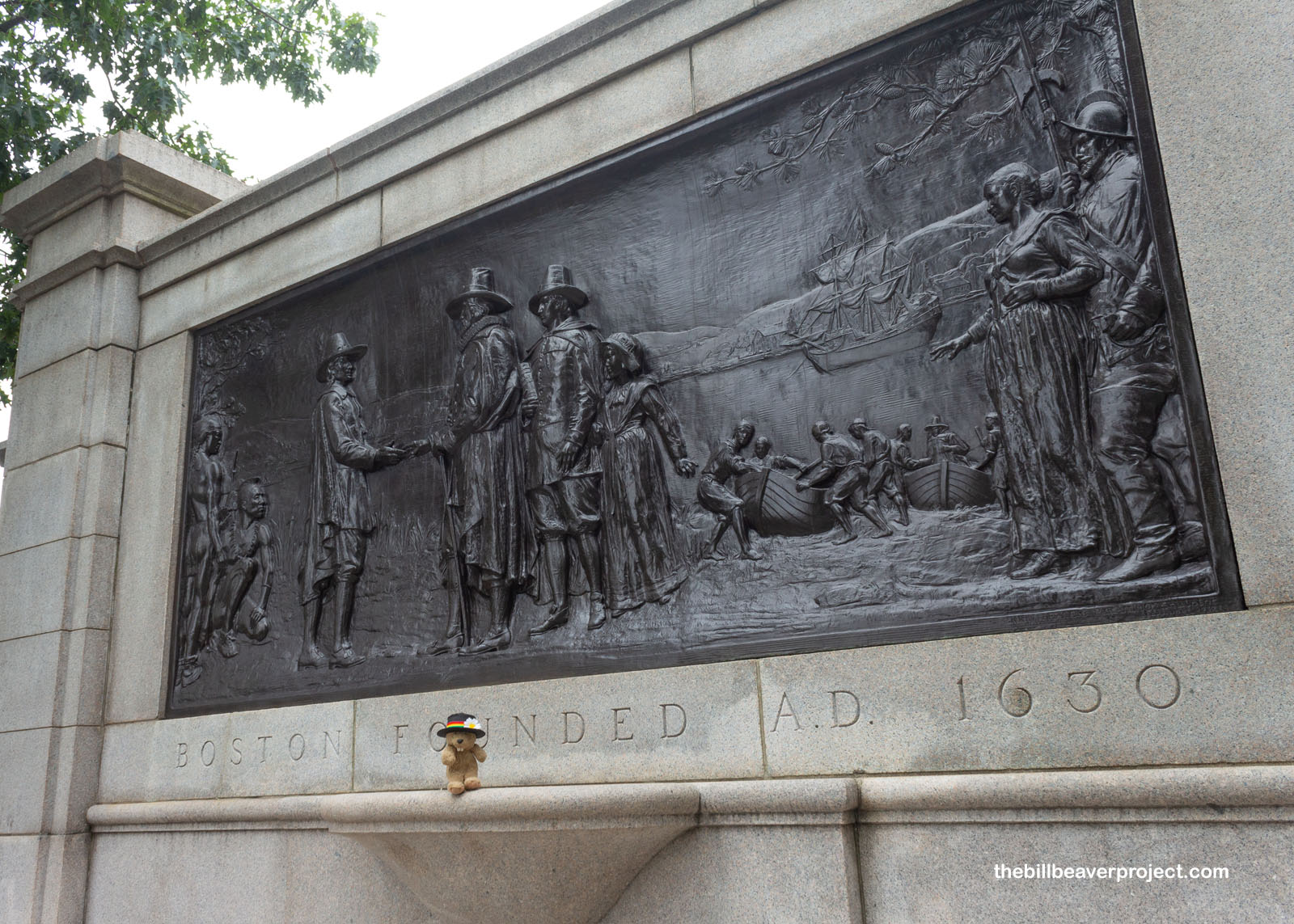 |
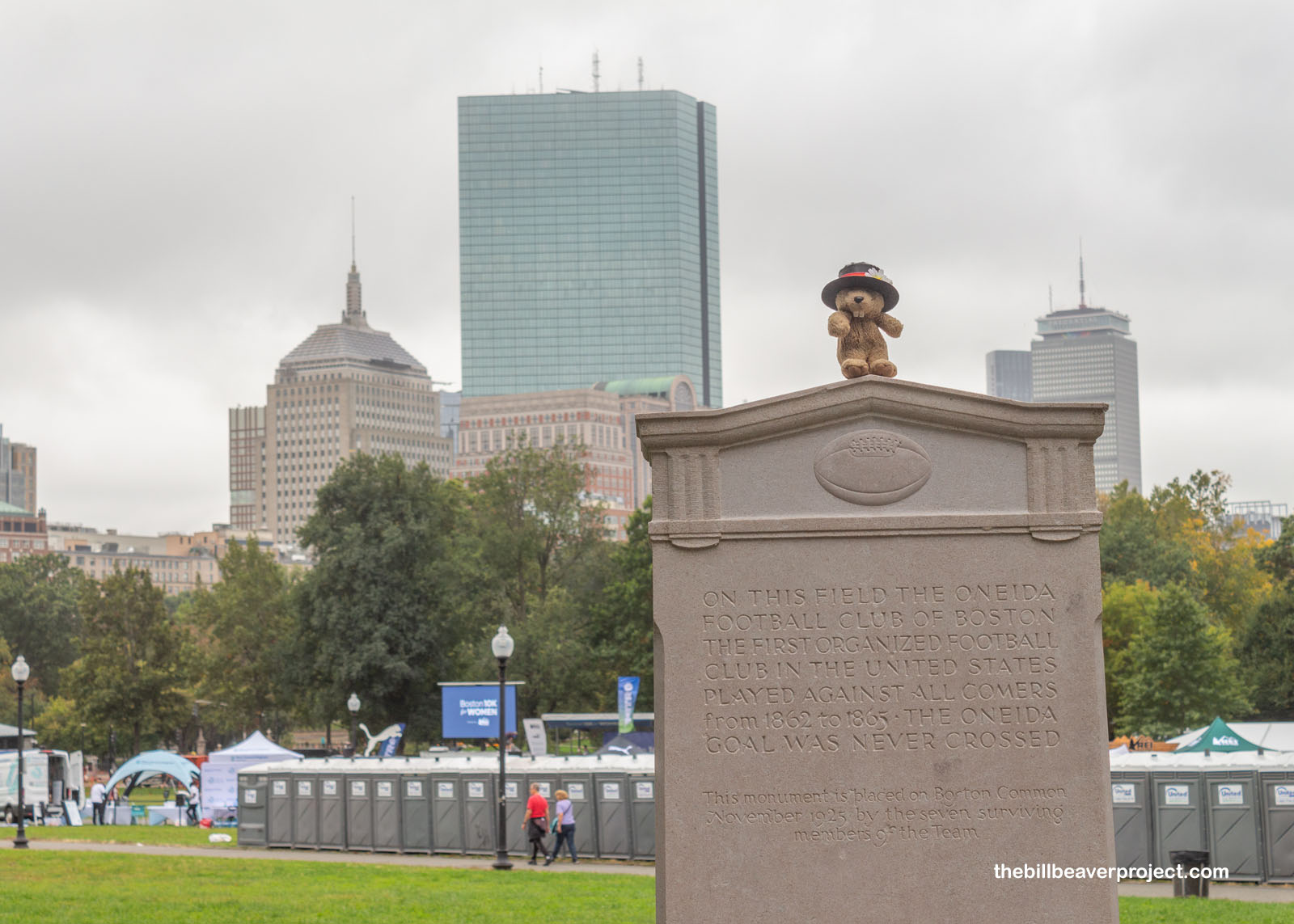 |
But by now, I heard a rumble. Was it the sky? No, it was my stomach, so I stopped to ask for food directions by Boston Public Garden’s most famous sculpture, Make Way for Ducklings! Boy, was the line ever long to take a photo with the mother mallard, inspired by Robert McCloskey’s 1941 book about two ducks struggling to find the best place in New England to raise their ducklings. They settle on Boston, where the people are most generous with their peanuts! Oof, that got me thinking about food again, and two very nice monkeys, Mr. and Mrs. Monkey to be precise, pointed me in the direction of one of Boston’s most famous pubs!
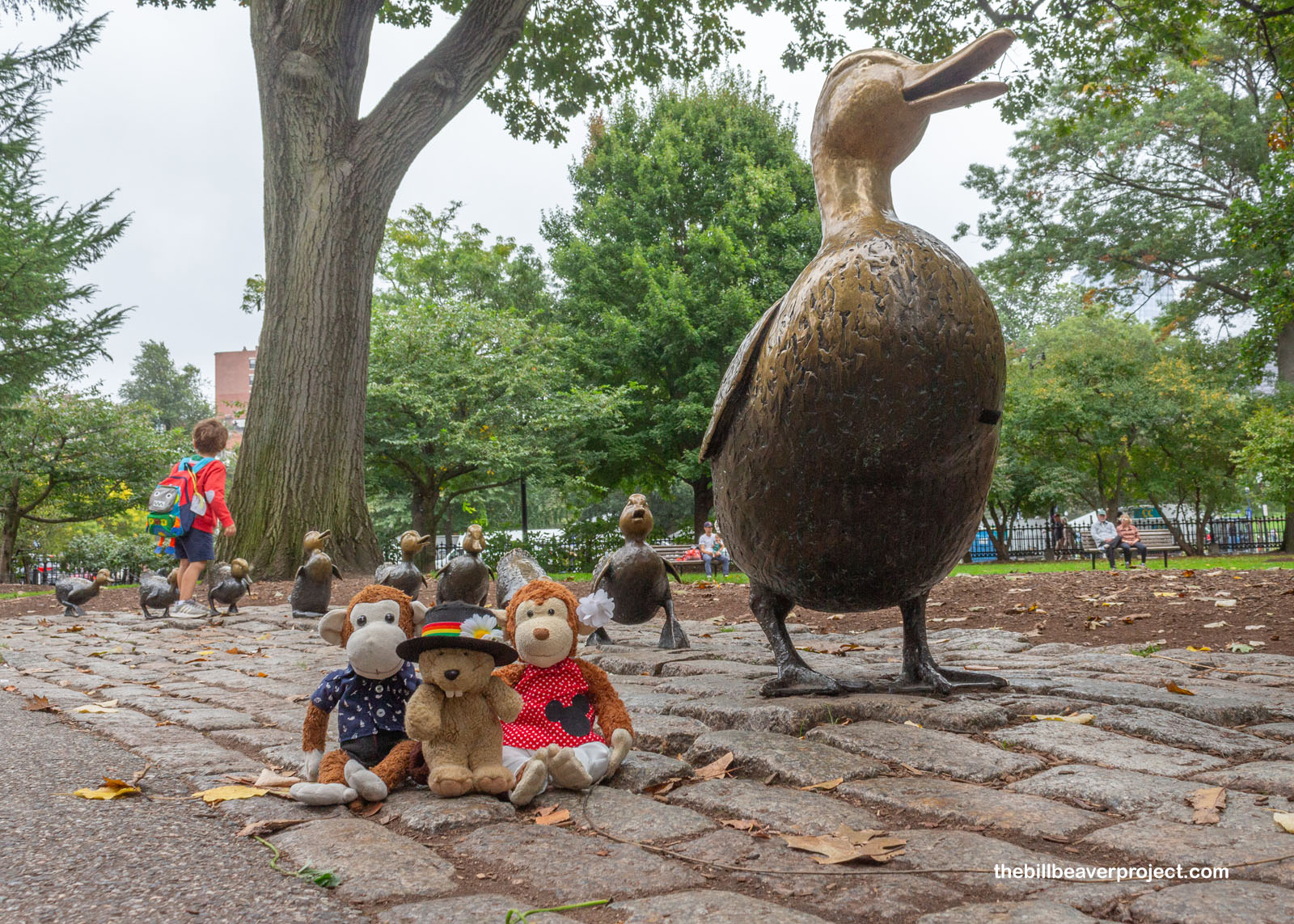 |
That pub, of course, was Cheers Beacon Hill! Founded in 1969 as the Bull & Finch Pub, this basement bar rose to national fame in 1982 as the inspiration for a sitcom called Cheers! I like laughing, and I like television, so I went in to see if anyone knew my name and could serve me some chowder, pronto! But it seemed like everyone else visiting Boston had the exact same idea! After twenty minutes waiting for either recognition or a waiter, I gave up and left in a huff. A hangry beaver is no fun for anyone!
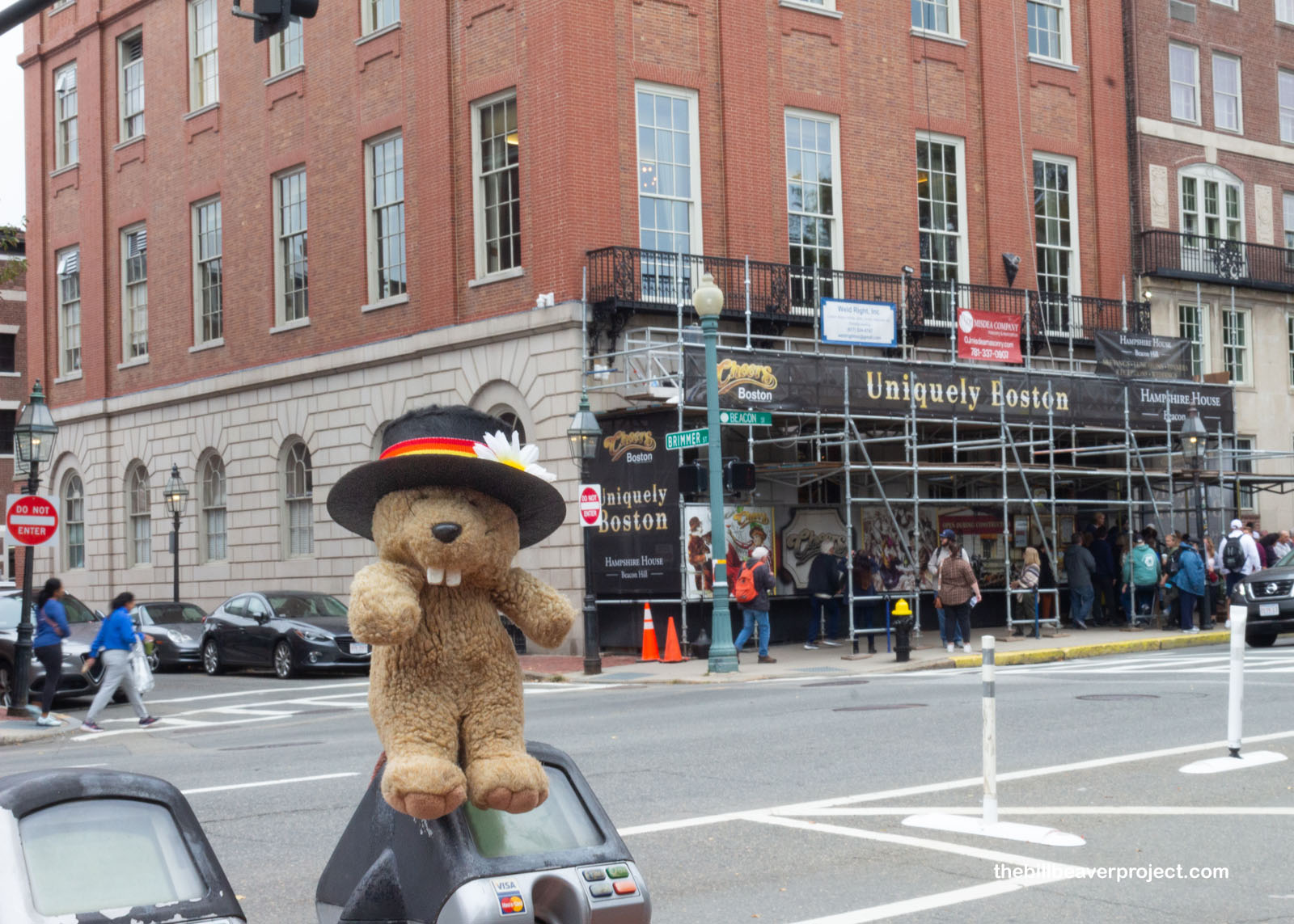 |
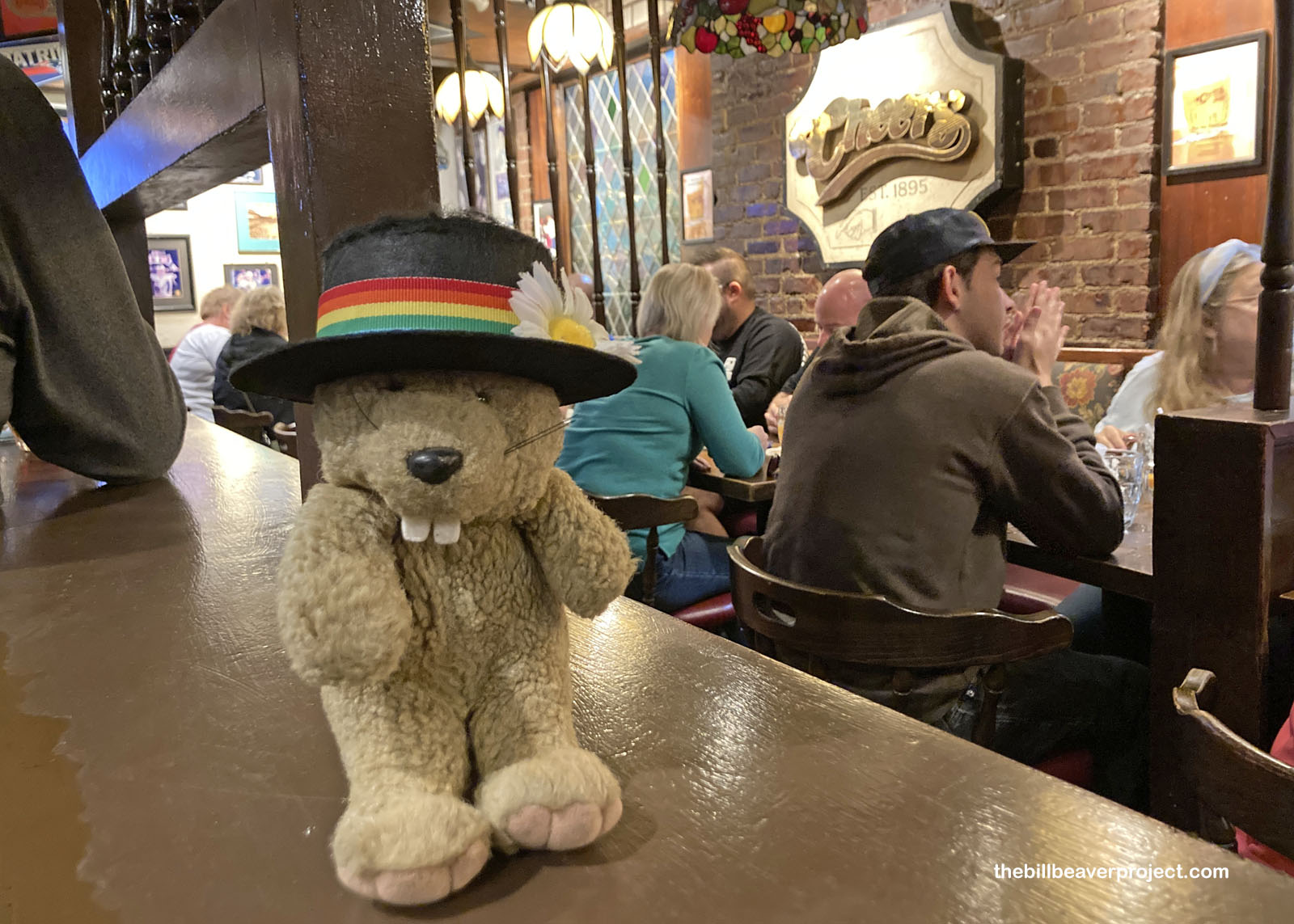 |
Instead, I set off to find the Freedom Trail, thinking it might lead me to freedom from my hunger, but I stopped to look at the Brattle Book Shop, one of the oldest and largest antiquarian book shops in the USA, marked by a huge pencil over the door! I was amazed that they’d set up an outdoor book fair with an almost 100% chance of rain this afternoon, and though I didn’t rescue any on my visit, I hoped they could cover it all up as soon as the rain did set in!
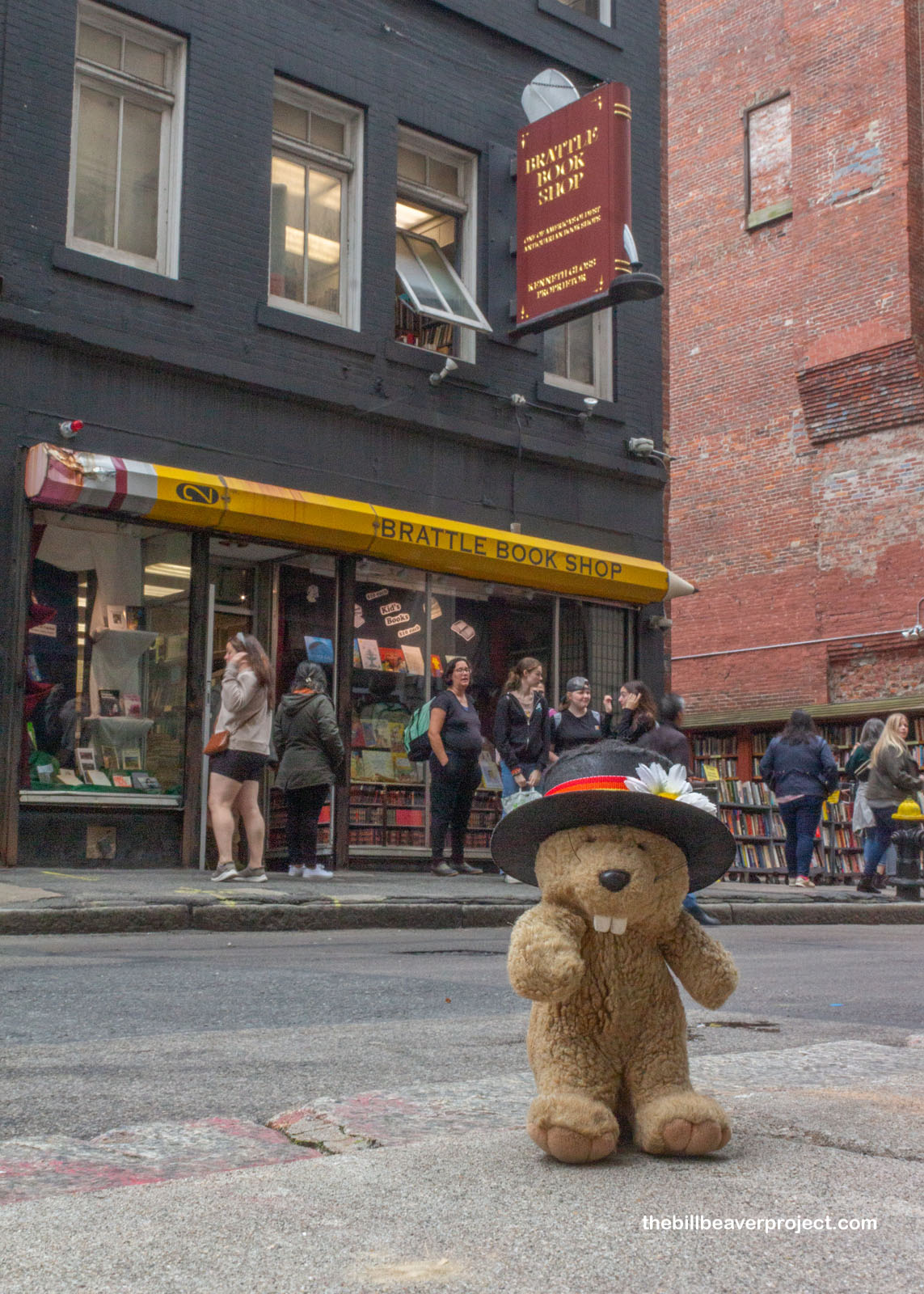 |
And sure enough, the rain kicked up just after 1:00 as the streets filled with protestors in advance of Monday’s holiday. On the calendars, it’s Columbus Day, but these protests were in favor of Indigenous People’s Day! It was a good location to protest, if a little soggy, as it was right next to the Old South Meeting House!
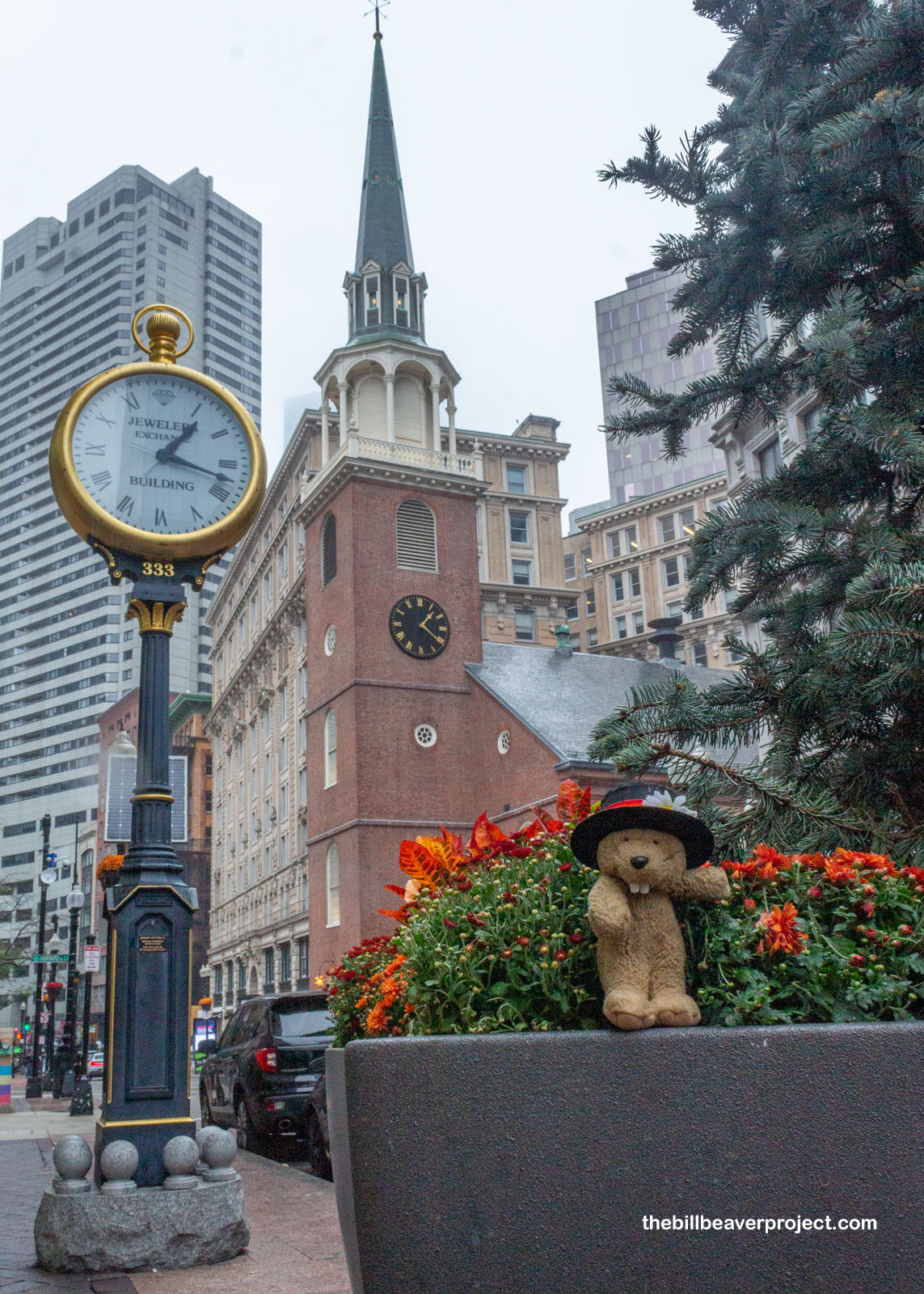 |
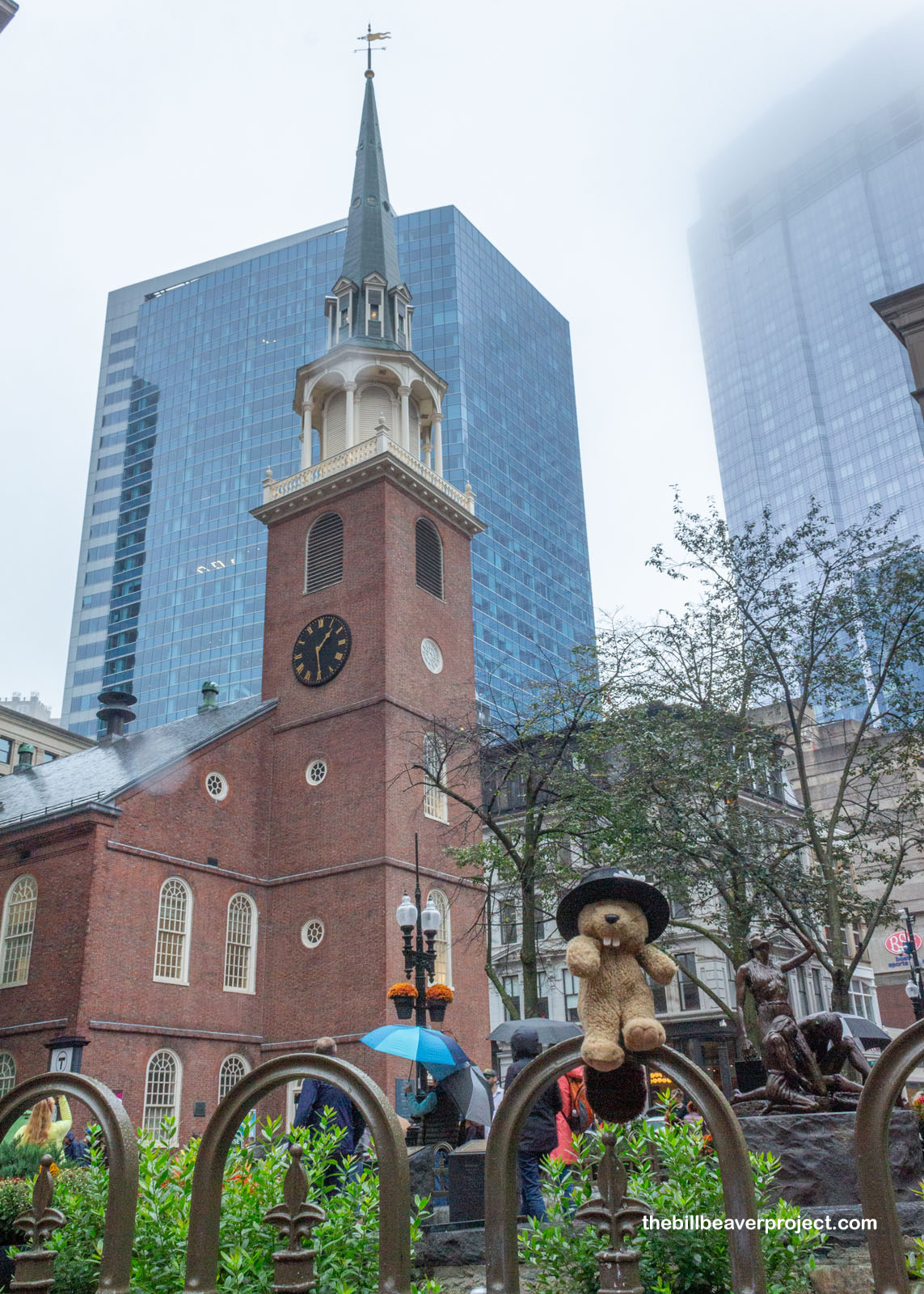 |
The rain didn’t stop the crowds, though. Far from it! Tours gathered near the Old State House, Boston’s oldest surviving public building! Before it was a state house, it was a British custom house, responsible for enforcing taxes and tariffs like the Townsend Acts, which is why 2,000 British troops were encamped in Boston Common (1 soldier per 8 civilians) to begin with!, Turns out, the Bostonians really weren’t happy about the additional expenses!
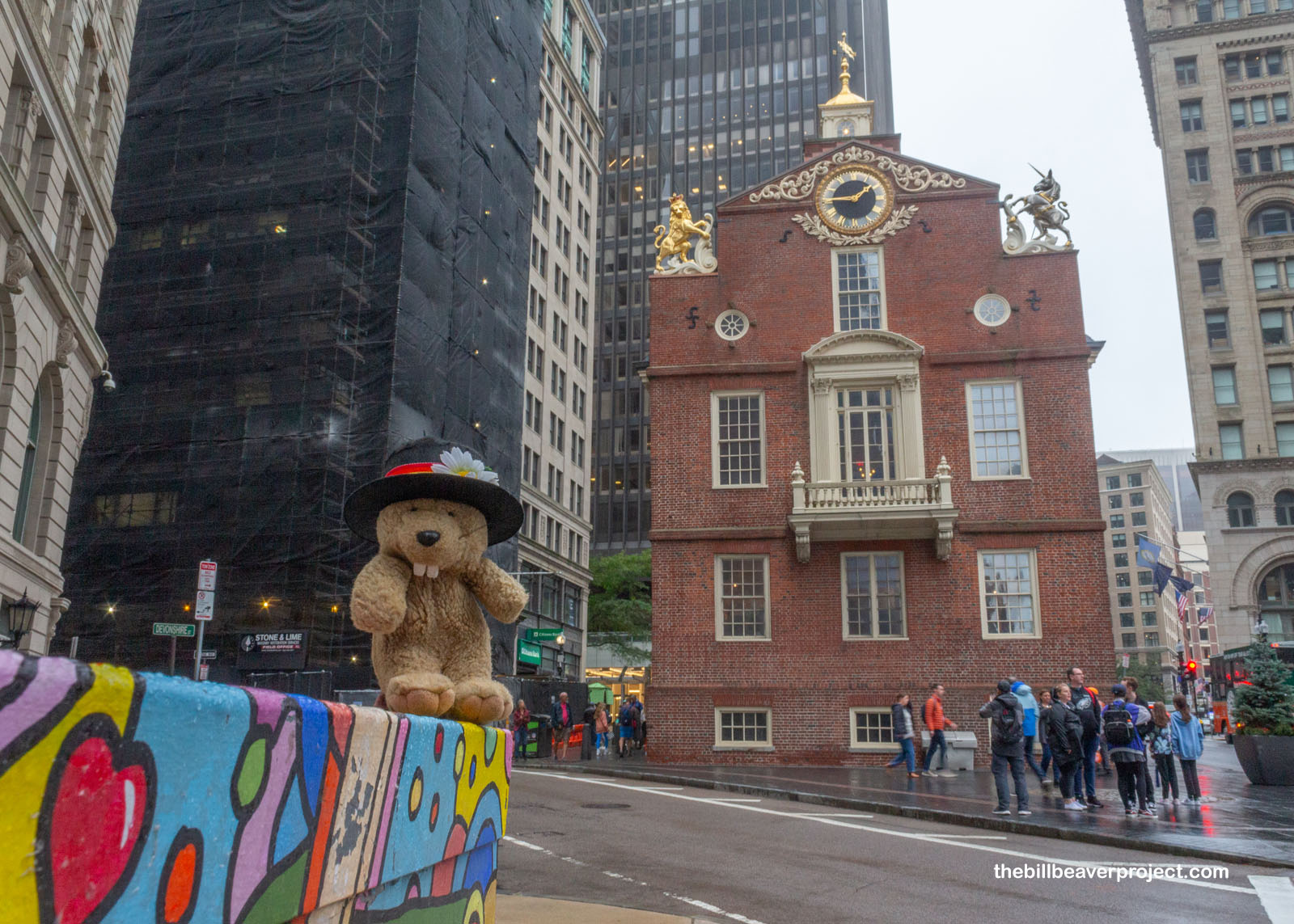 |
Tensions flared on March 5, 1770 when soldiers of the 29th Regiment under Captain Preston marched over to stop a protest outside the Custom House. As the crowd pressed in on them, the soldiers started shooting, killing Crispus Attucks, Samuel Gray, James Caldwell, Samuel Maverick, and Patrick Carr! Though the soldiers got their legal defense from none other than John Adams, outrage over the shooting led to citywide riots and the evacuation of the British for four years!
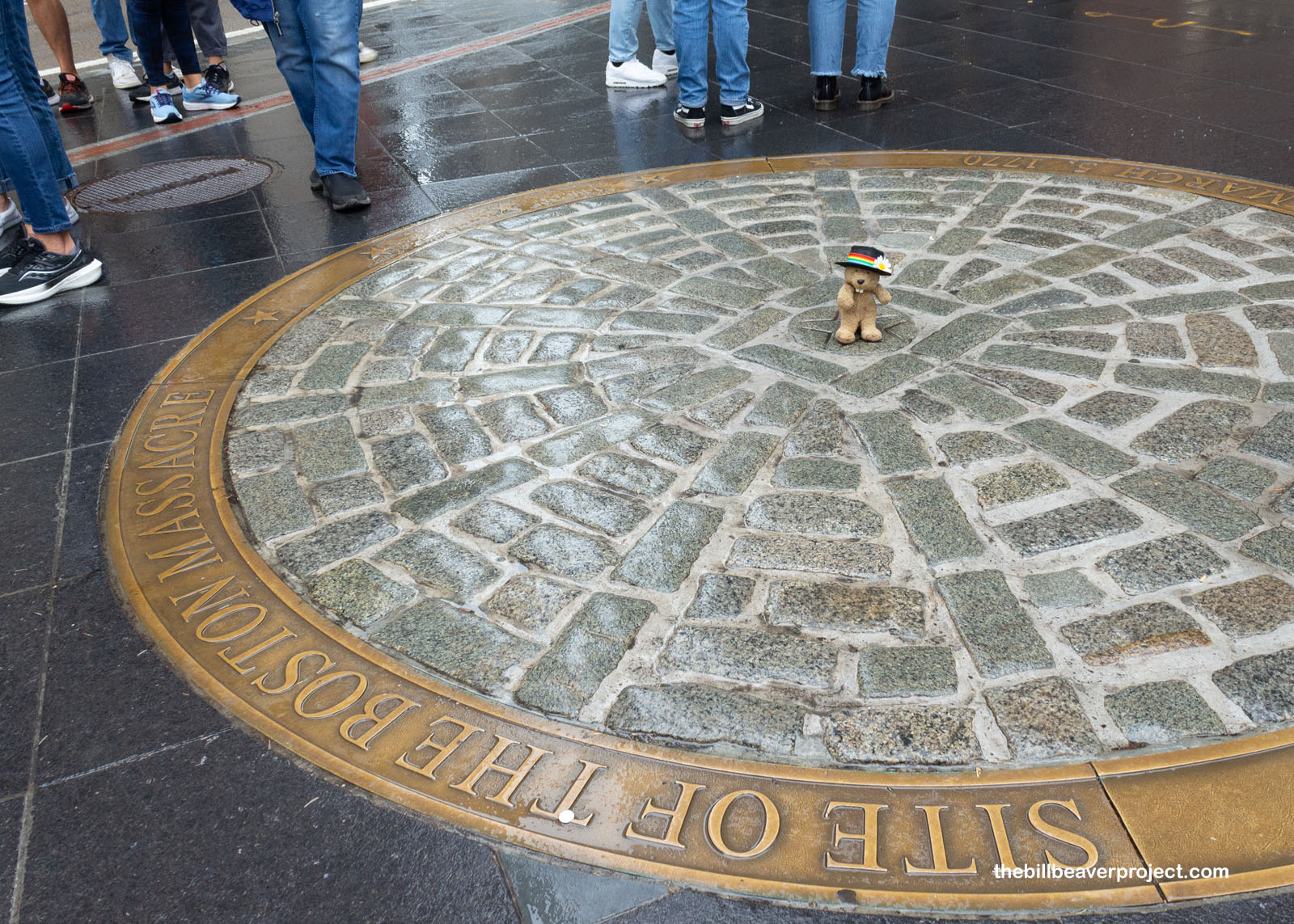 |
By now, it was really dumping, and I was really hungry, so I headed over to the commercial area at Faneuil Hall! Gifted to the city in 1742 by merchant, Peter Faneuil, this huge building was one part marketplace and one part meeting hall! In the second capacity, it played host to lots of orators from the Sons of Liberty in the years leading up to the Revolution, and for that reason, this building is known as the “Cradle of Liberty!”
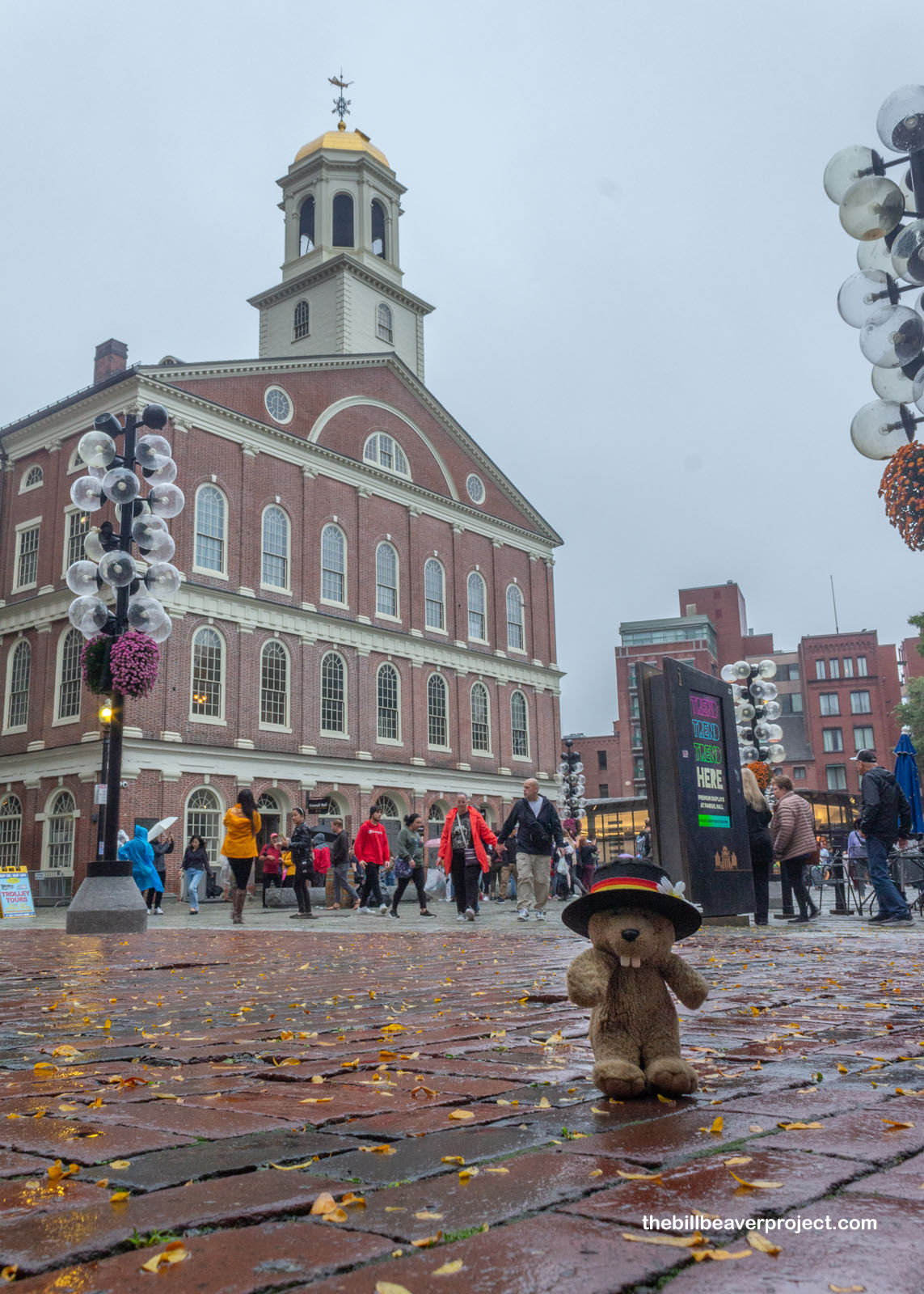 |
Behind Faneuil Hall, I found my bread bowl of chowder at last in Quincy Market, America’s first food hall! It was the perfect break from the driving rain and gave me time to enjoy the marvel that this market is! It’s an extension of Faneuil Hall, circa 1826, built on landfill! That’s right, all of this ground under here was dragged into the harbor back in the early 1800s to add space for more buildings! Quincy Market was designed by Alexander Parris and named after Mayor Josiah Quincy, who funded its construction without raising taxes or going into debt! Originally a shopping center for groceries, it got a makeover in the 1970s and was well equipped with enough restaurants today to meet my immediate needs very, very well!
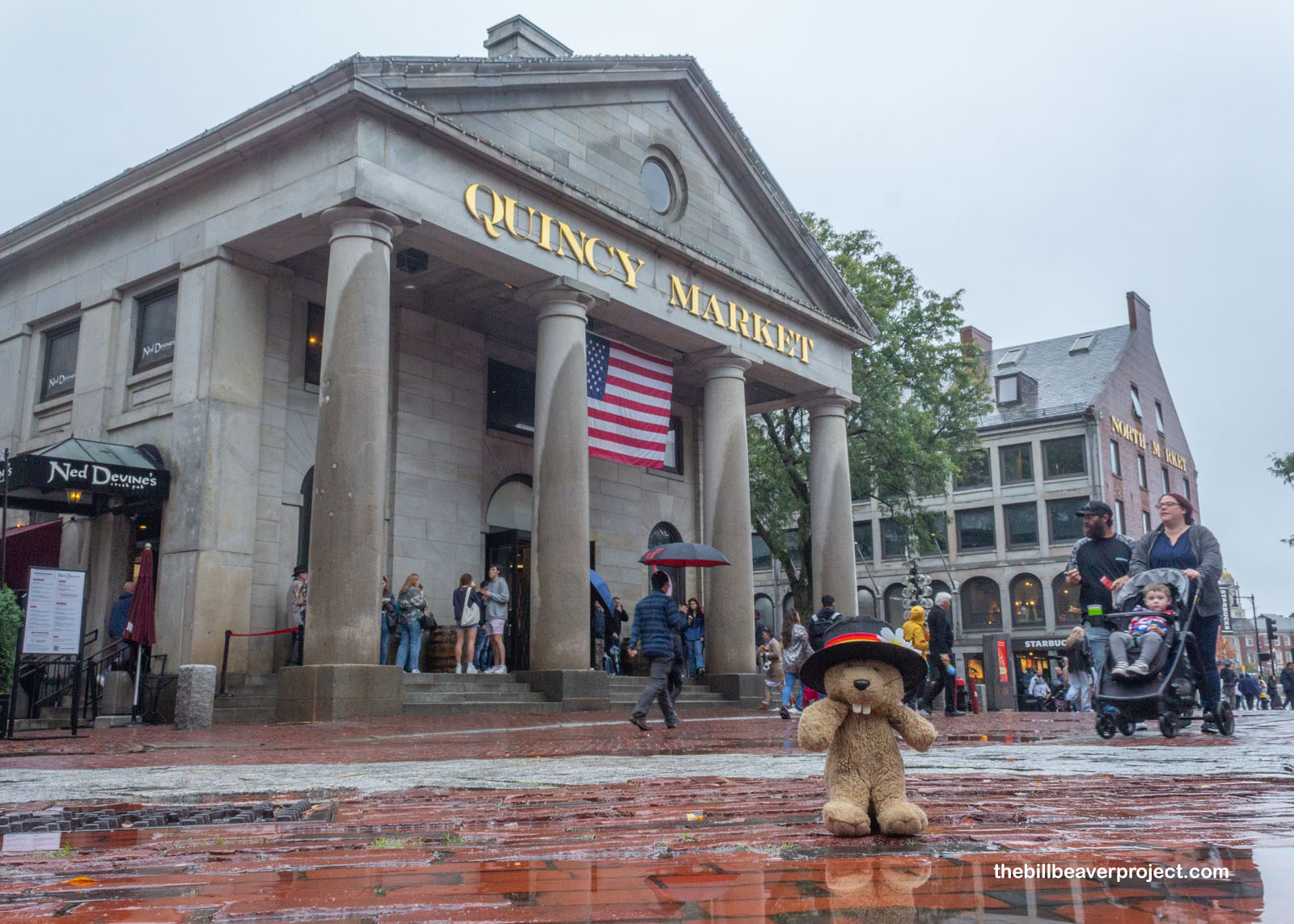 |
With a break in the rain and my batteries much fuller, I continued along the Freedom Trail to one of Boston’s must-sees, the Paul Revere House! Built in 1680, the home of the equestrian silversmith and Son of Liberty is downtown Boston’s oldest, though the Revere family didn’t move in until 1770! If you can imagine, 16 Revere children did their best to grow up in this house, but only one son and one daughter made it to adulthood. From here, Mr. Revere operated his smithing business in silver and copper as Boston became American and the apprenticeship system turned to one of employment! I should have gone in to take a break from the dampness, but the enormous line was a no-go!
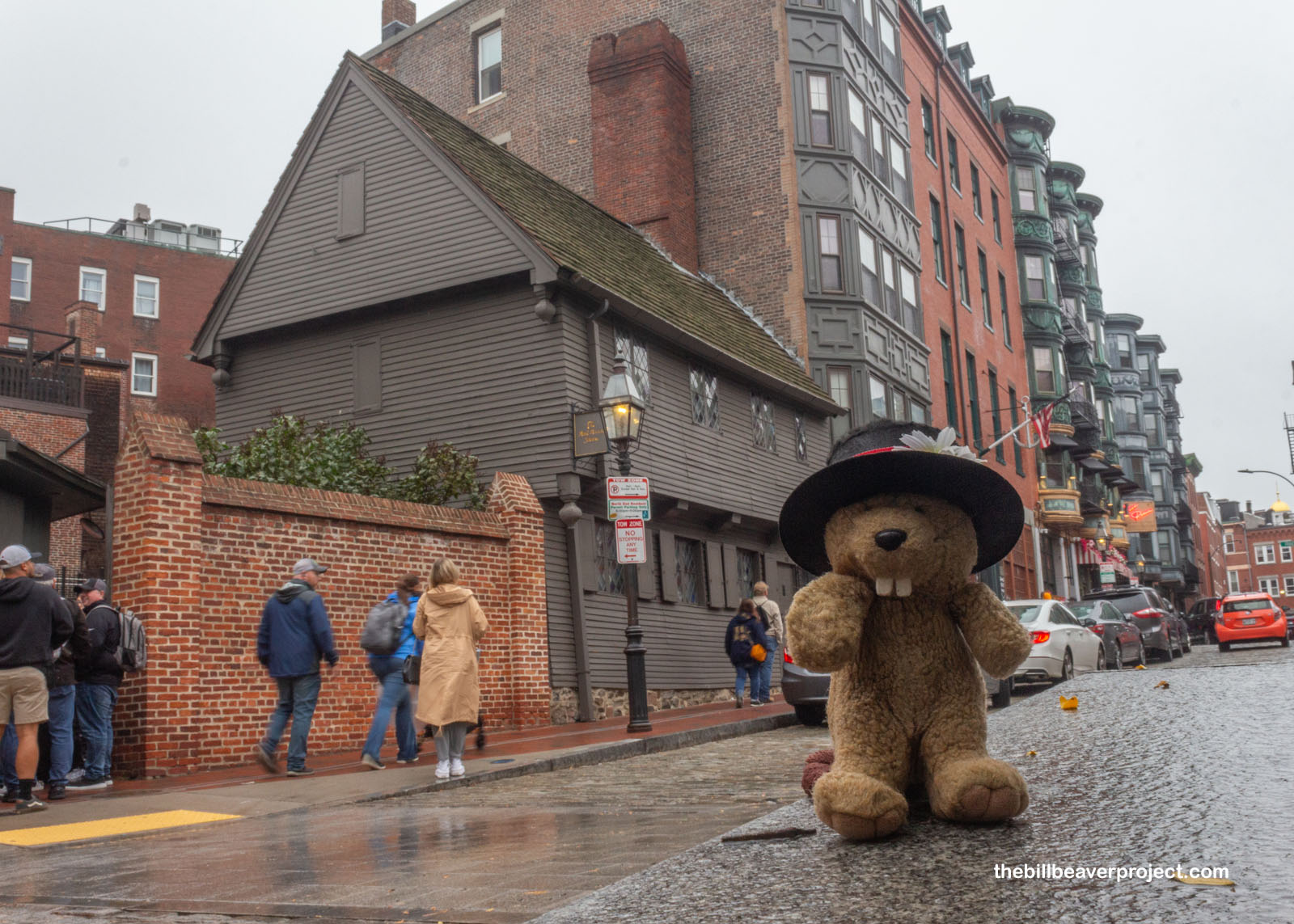 |
But I took a second to look back, and with the help of a bronze relief, get a rough idea of how this neighborhood might have looked back in the 1700s, before there were skyscrapers and chowder bowls! Notably, the pre-landfill Boston Harbor put the famous U.S.S. Constitution much closer to downtown than it is now, but I’ll get to that in a few miles!
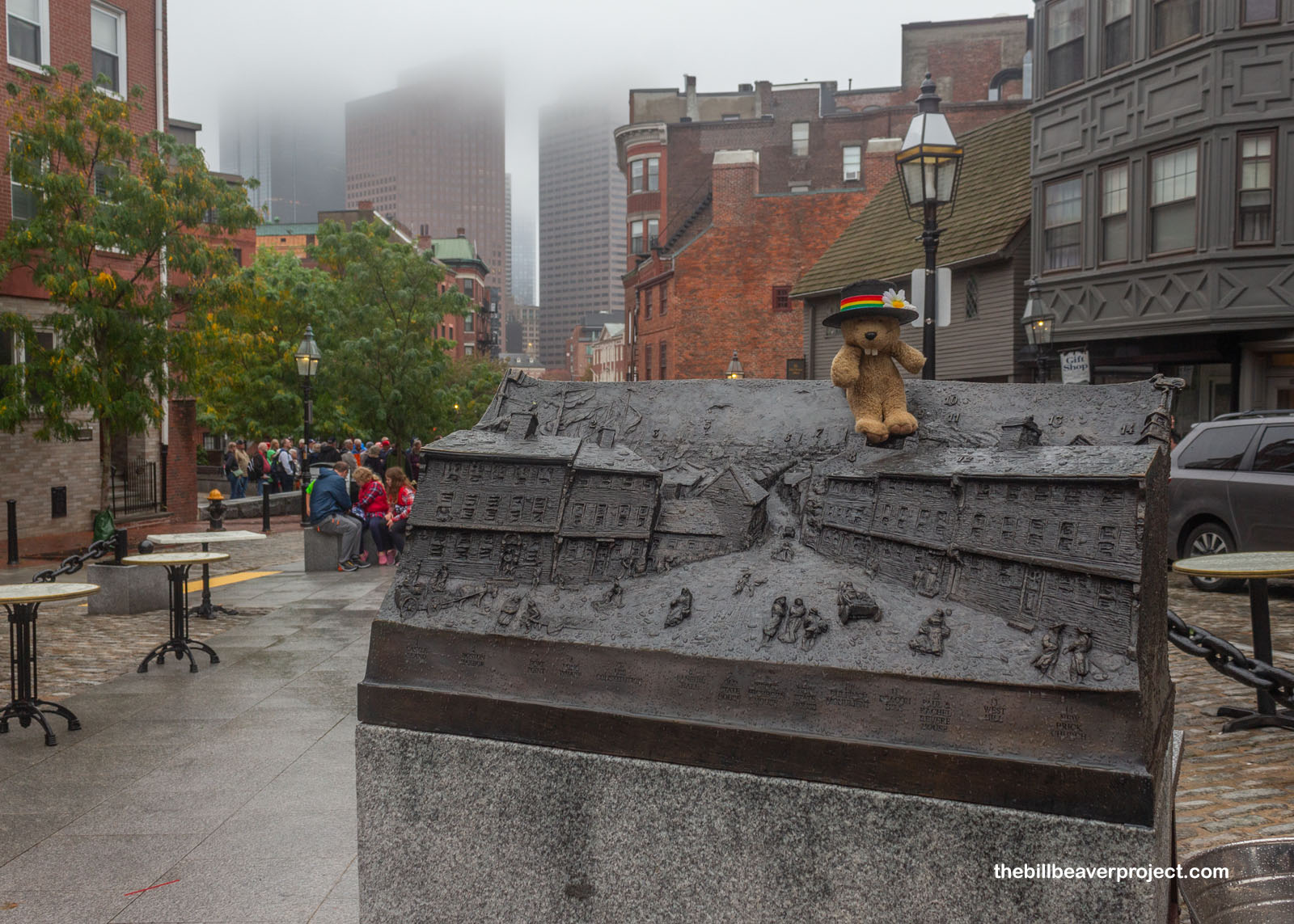 |
First, though, I’m not done with Paul Revere just yet. I saw back at Minute Man National Historical Park how his famous midnight ride ended, but more famously, just ahead is where it began!
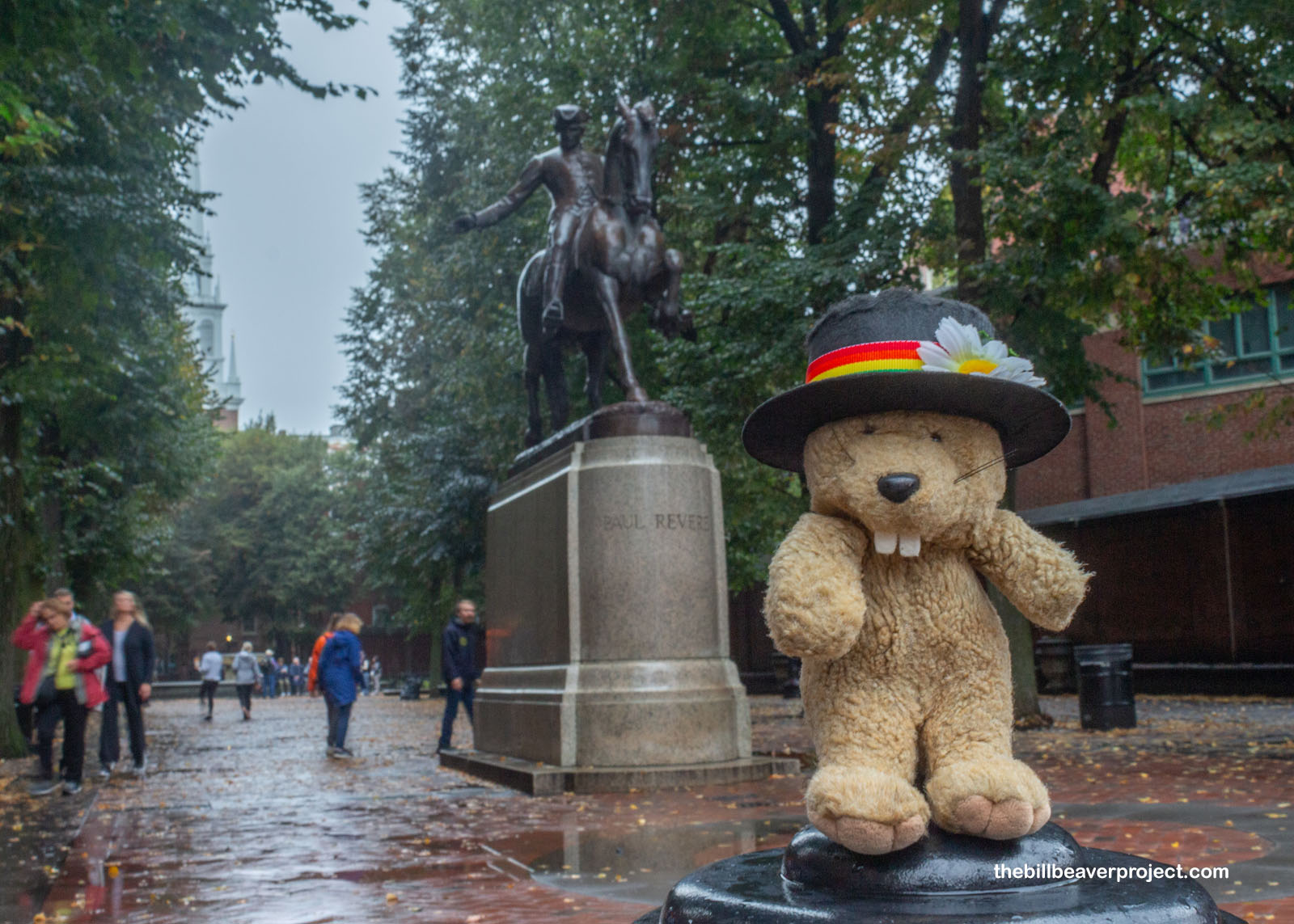 |
Yup, I’m talking about the Old North Church, another Boston oldest, built in 1723 and still featuring a 1759 pipe organ and an extensive crypt! Mr. Revere was one of the first to ring the church bells in 1750, though his father was a devout Puritan and didn’t want his son spending too much time at this Anglican church. As an Anglican church, it attracted a lot of loyalists, including the Royal Governor of Massachusetts himself! That made it an unlikely place for anything revolutionary to be afoot.
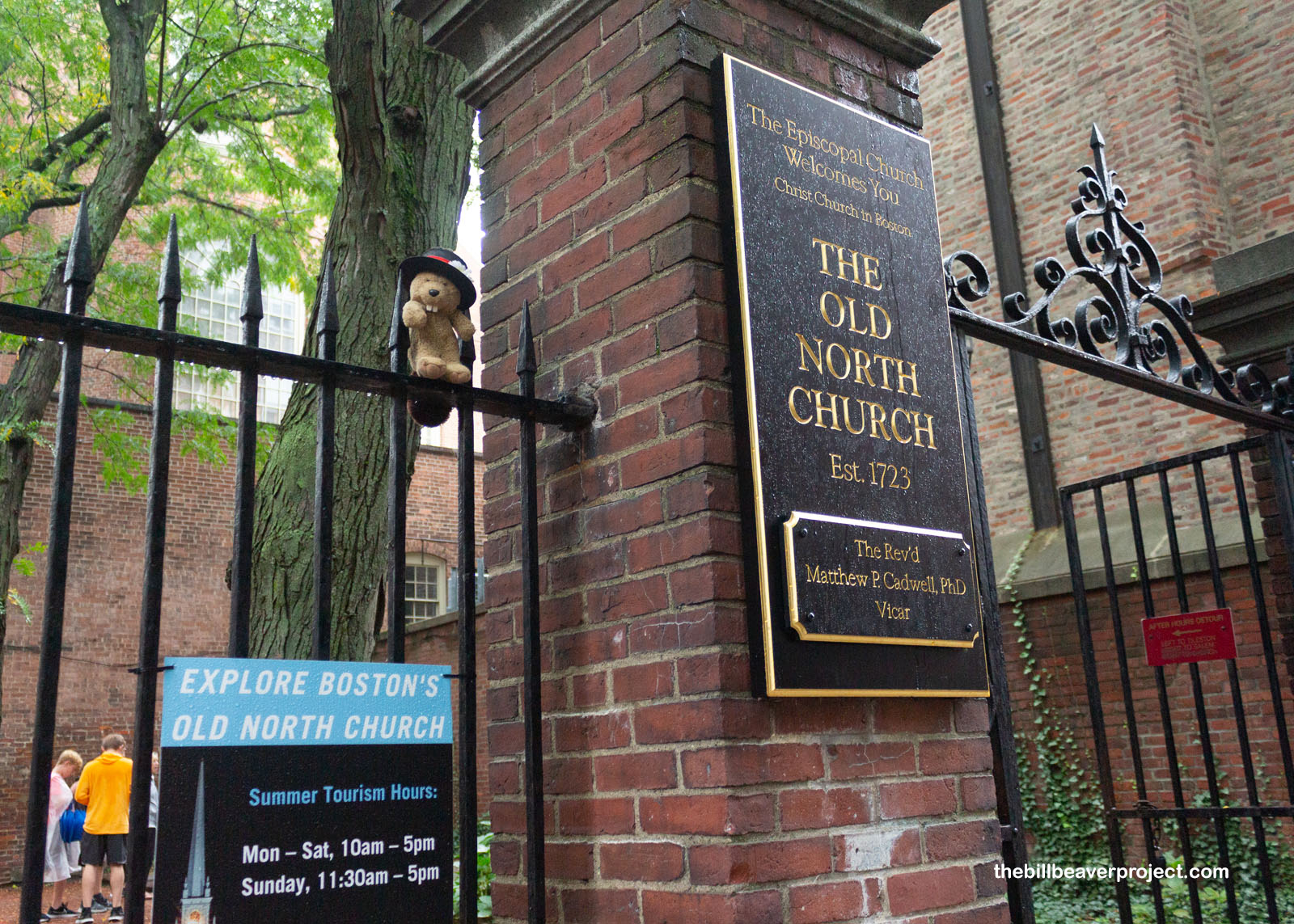 |
Unlikely or no, it was the Old North Church’s sexton, Robert Newman, and vestryman, Capt. John Pulling, Jr., who ascended the bell tower and held up two lanterns, signaling to Paul Revere and William Dawes that the British were beginning their march to Lexington and Concord by sea, crossing the Charles River. That determined their riding routes that night!
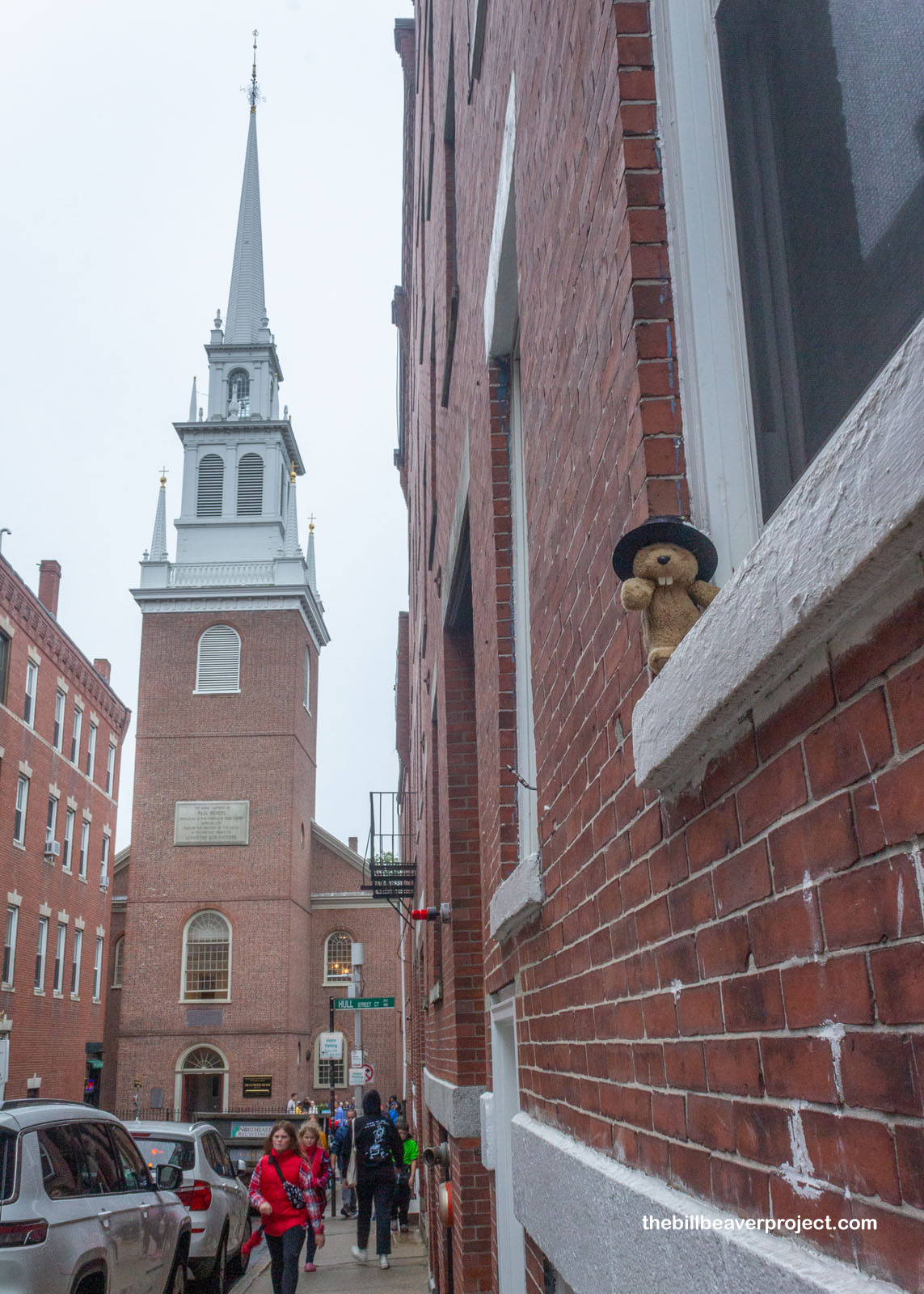 |
Not sure when exactly the rain would start up again, I kept hustling down the Freedom Trail as it crossed a pedestrian bridge into Charlestown, where I began my Boston adventure almost a week ago! Here, I finally noticed that the Freedom Trail is actually laid out on the ground, in some spots red paint, and in others red and white bricks! It took me a while to realize that here, the Trail splits, with half going to the U.S.S. Constitution where I wanted to go, and half going to the Bunker Hill Monument, where I’d already been!
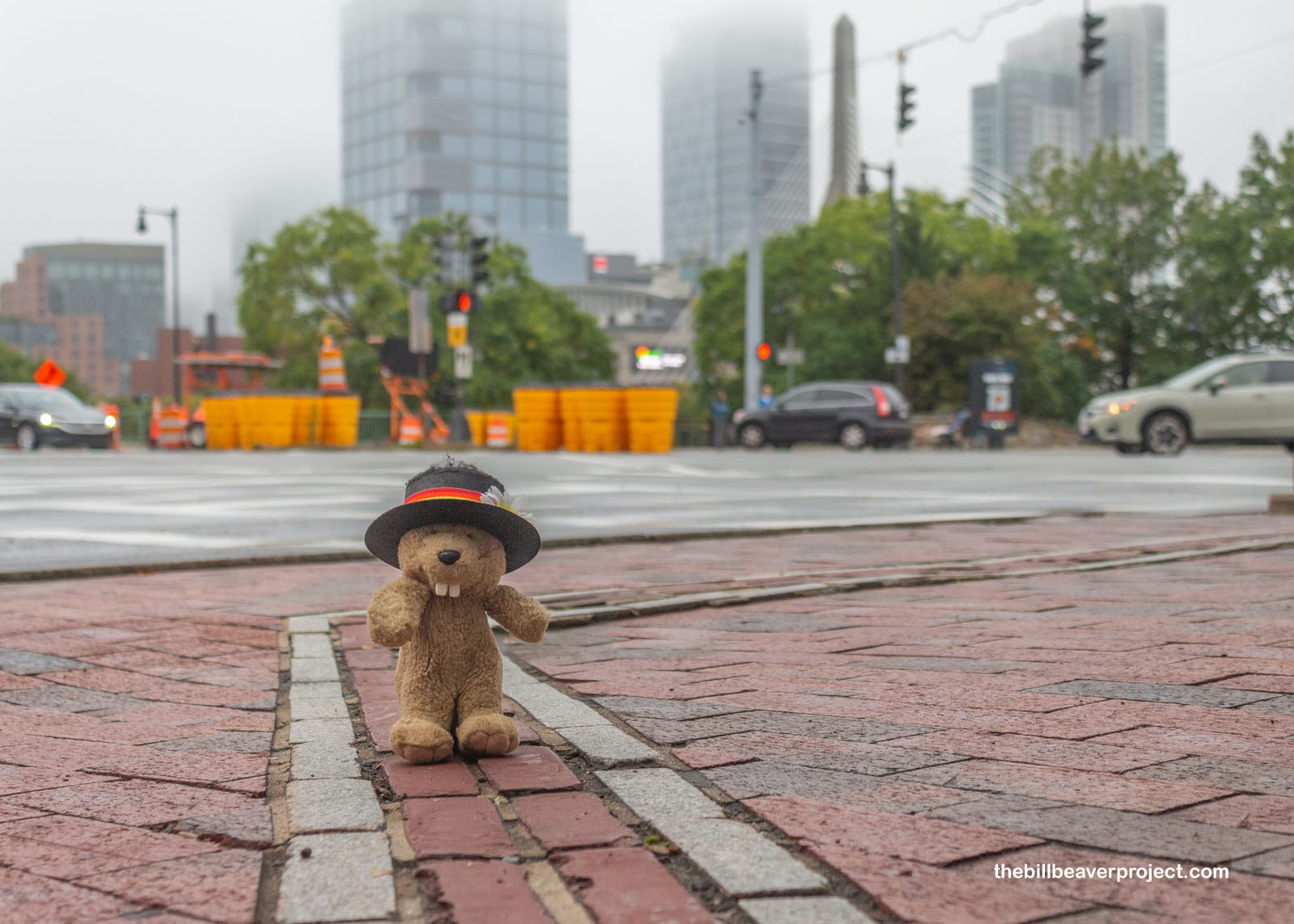 |
As I slowly figured this out, I took a moment to enjoy the metal cod sculpture at the entrance of the park. Cod, of course, were a major industry in Massachusetts, across New England, and up into Canada! They’re much scarcer now, meaning some traditional dishes, like lox, are made with salmon instead, but you’ll see evidence of their influence in places like Cape Cod!
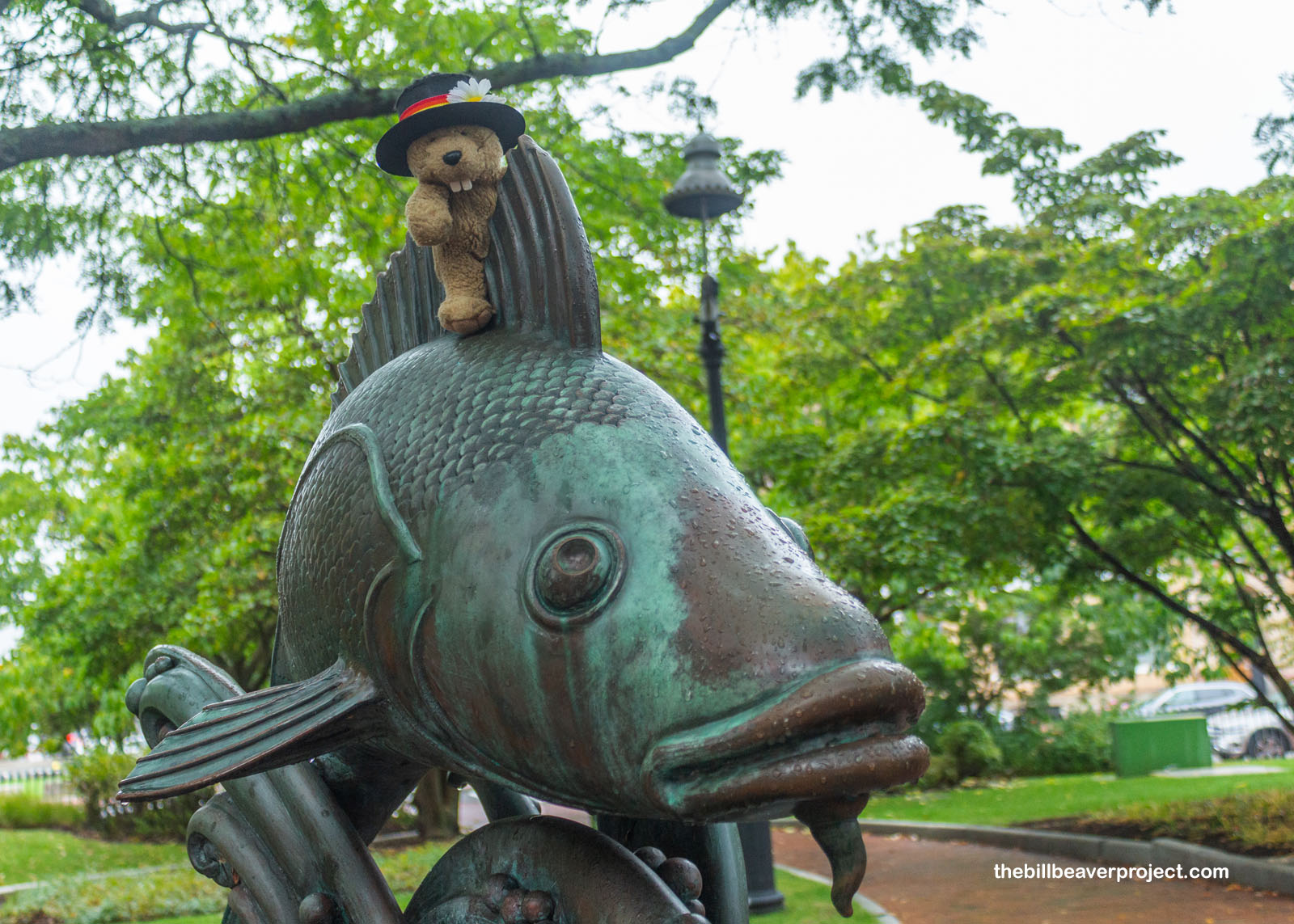 |
Had I taken the correct path right away, I would have missed a humble foundation with a big story! This was the site of the Massachusetts Bay Colony’s very first public building, the Great House! Built for John Winthrop in 1629, it served as seat of colonial government for about a year until the Colony moved across the river to settle Boston instead! The Great House became Robert Long’s Three Cranes Tavern in 1635 and remained that way for 140 years! The Battle of Bunker Hill was both its undoing and, by covering it with ashes, the preserver of its original location, which was rediscovered in the 1980s!
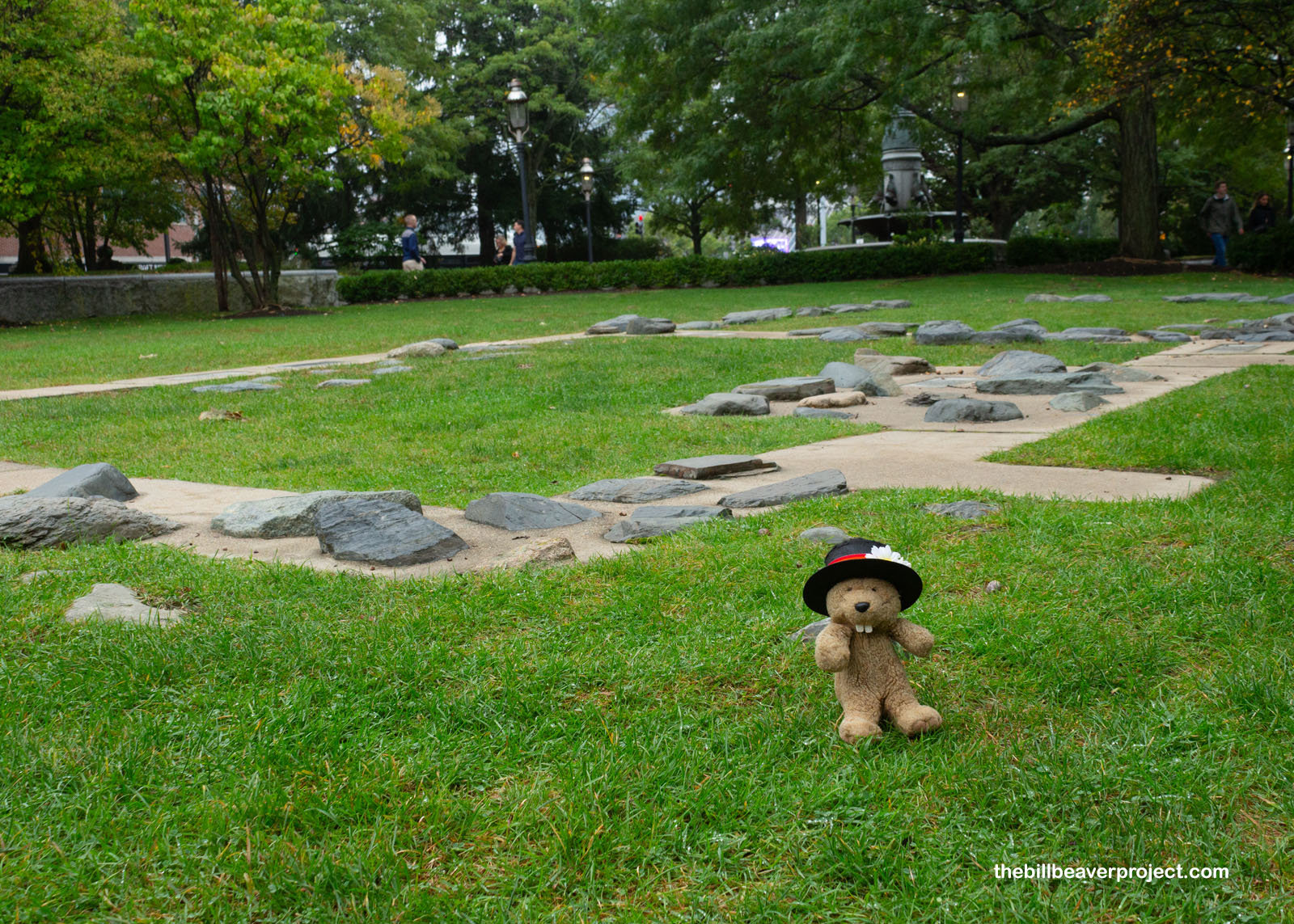 |
But at last, I got back on the right path to complete the second half of Boston National Historical Park’s major sites: the Charlestown Navy Yard, home to “Old Ironsides” itself, the U.S.S. Constitution!
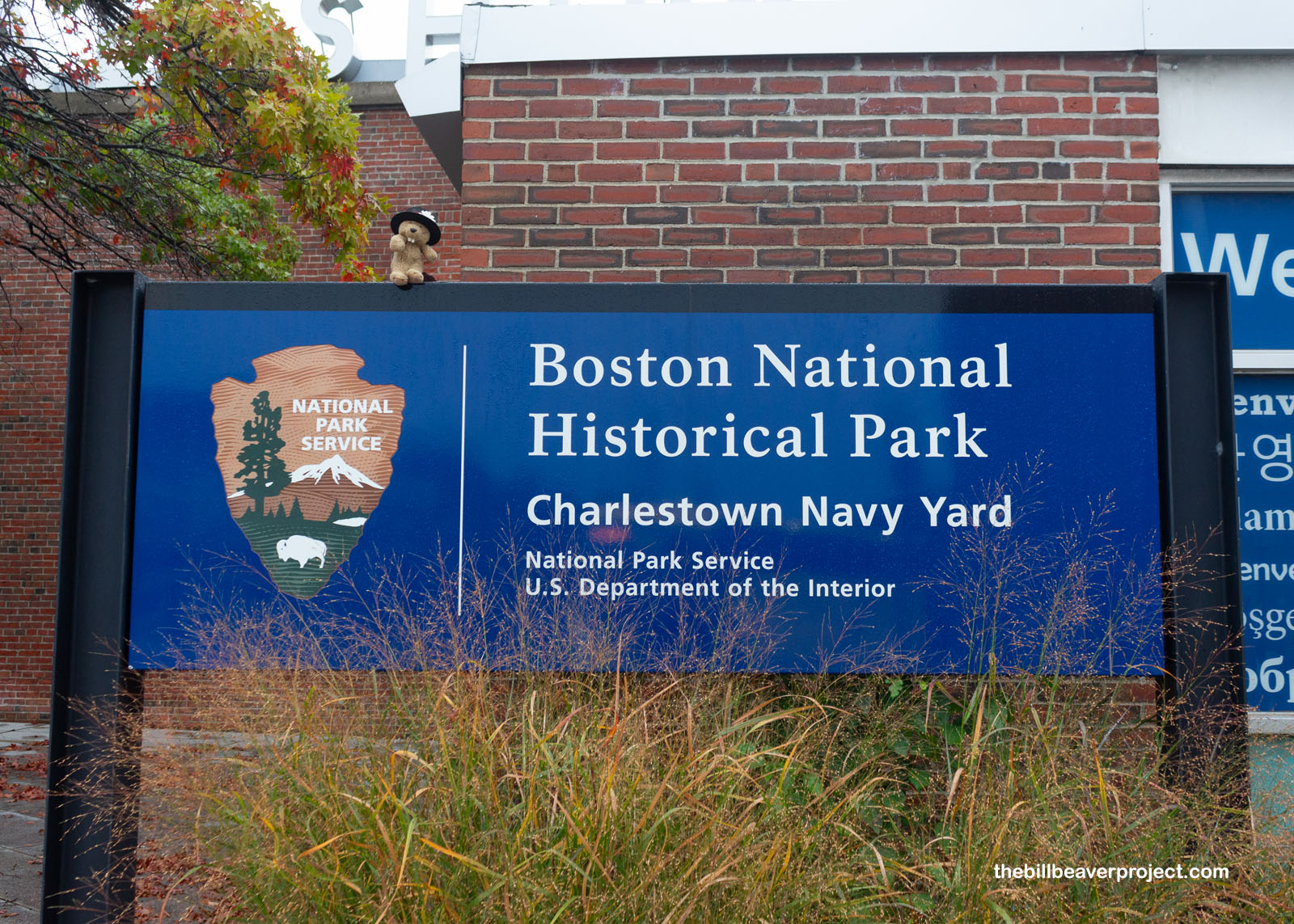 |
This is the oldest commissioned warship still afloat, and I gotta say, she looks pretty good for her age! Completed on October 21, 1797 and launched on July 22, 1798, this 44-gun frigate carried 450 officers, sailors, and Marines into battle during the War of 1812! She earned the nickname “Old Ironsides” when she squared off against the H.M.S. Guerriere, whose cannonballs bounced off the white oak making her up! Huzzah!
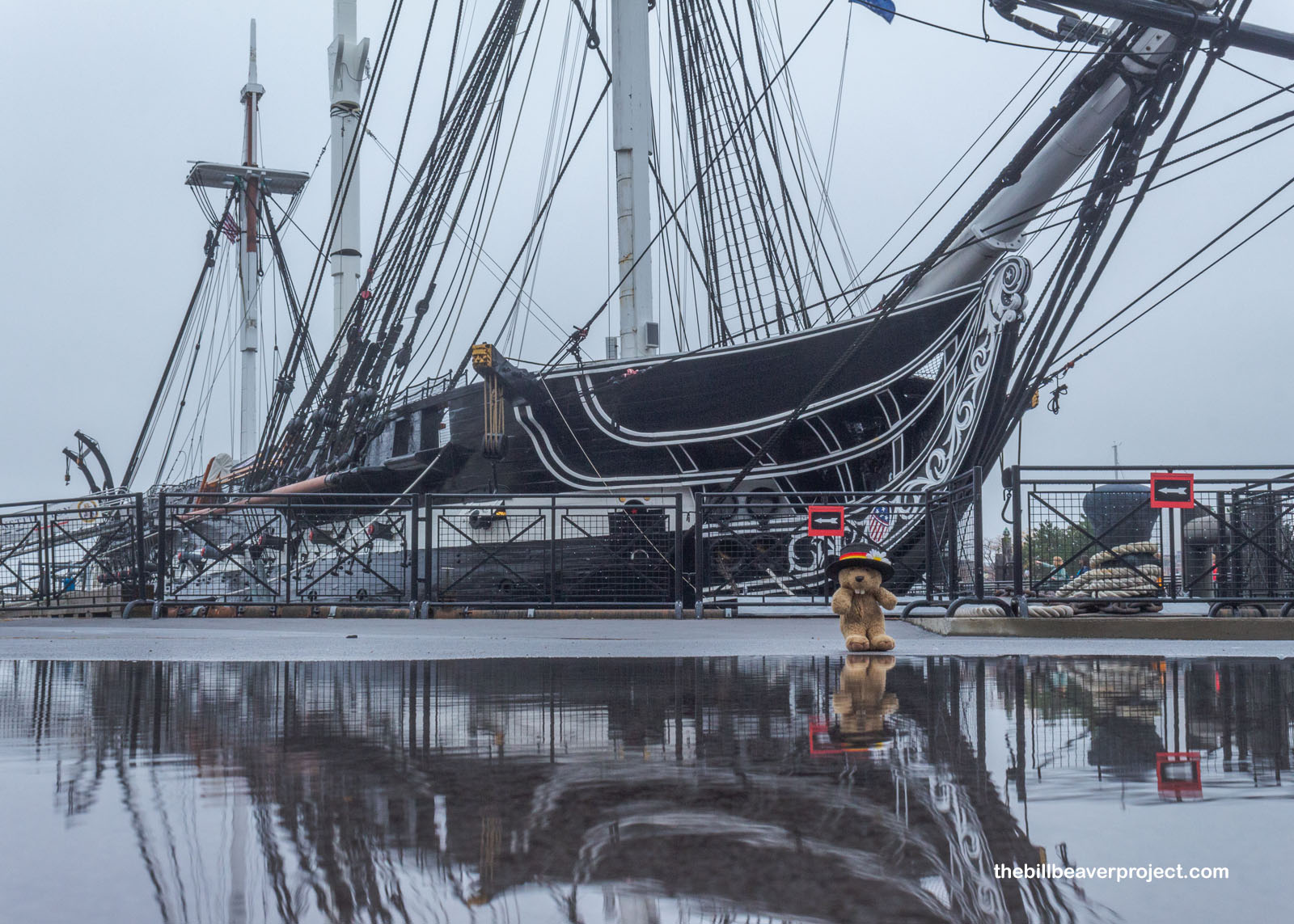 |
The war of 1812 was the last of her major military engagements, and “Old Ironsides” has had a long retirement in which she’s covered lots of ground! She cruised first to the Caribbean in 1798, around the world between 1844 and 1846, and even transported the United States exhibits to the Exposition Universelle in Paris in 1878! She’s also served as a training vessel for preparing new recruits for life at sea!
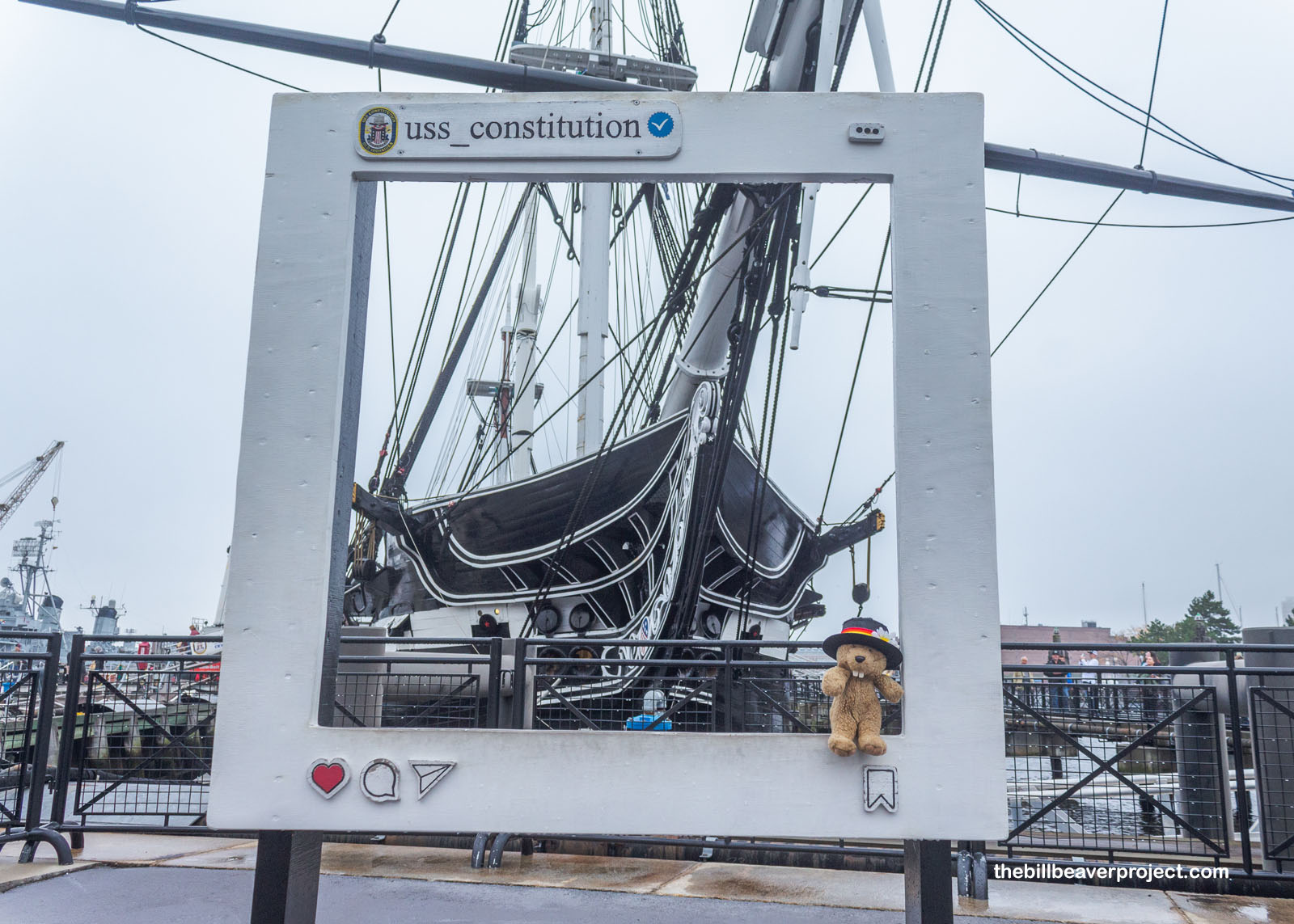 |
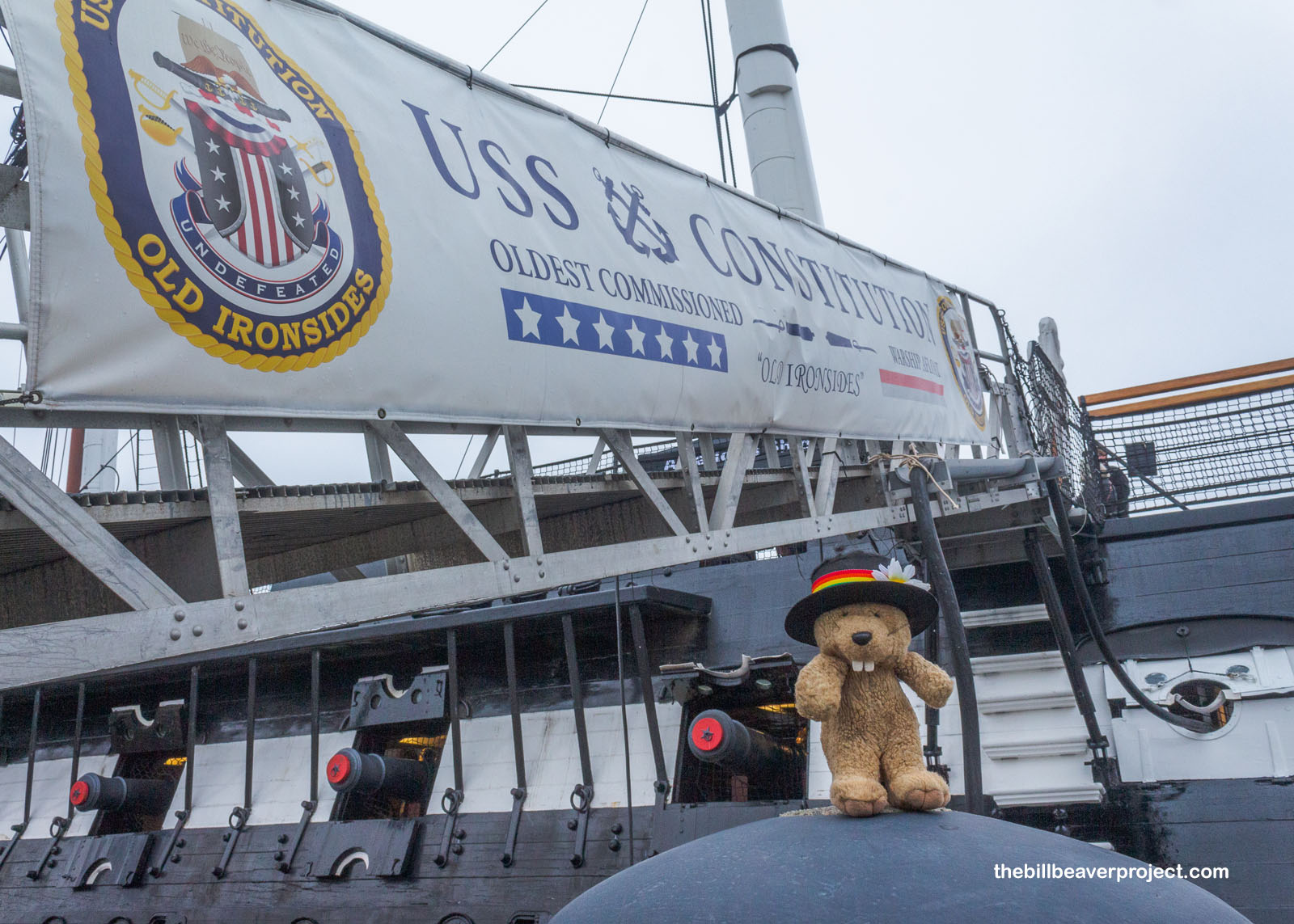 |
Starting in 1934, the Constitution has been an exhibition ship here in Boston. It began as an unofficial move, as she’d been docked for repairs before in Norfolk, Virginia, New York City, and Portsmouth, New Hampshire, but on July 3, 1954, Congress, through Public Law 83-523, declared that Boston would be the official home port of the U.S.S. Constitution! Still able to sail, this gorgeous ship spends most of her time resting on her laurels as part of a greater museum here in Boston Harbor!
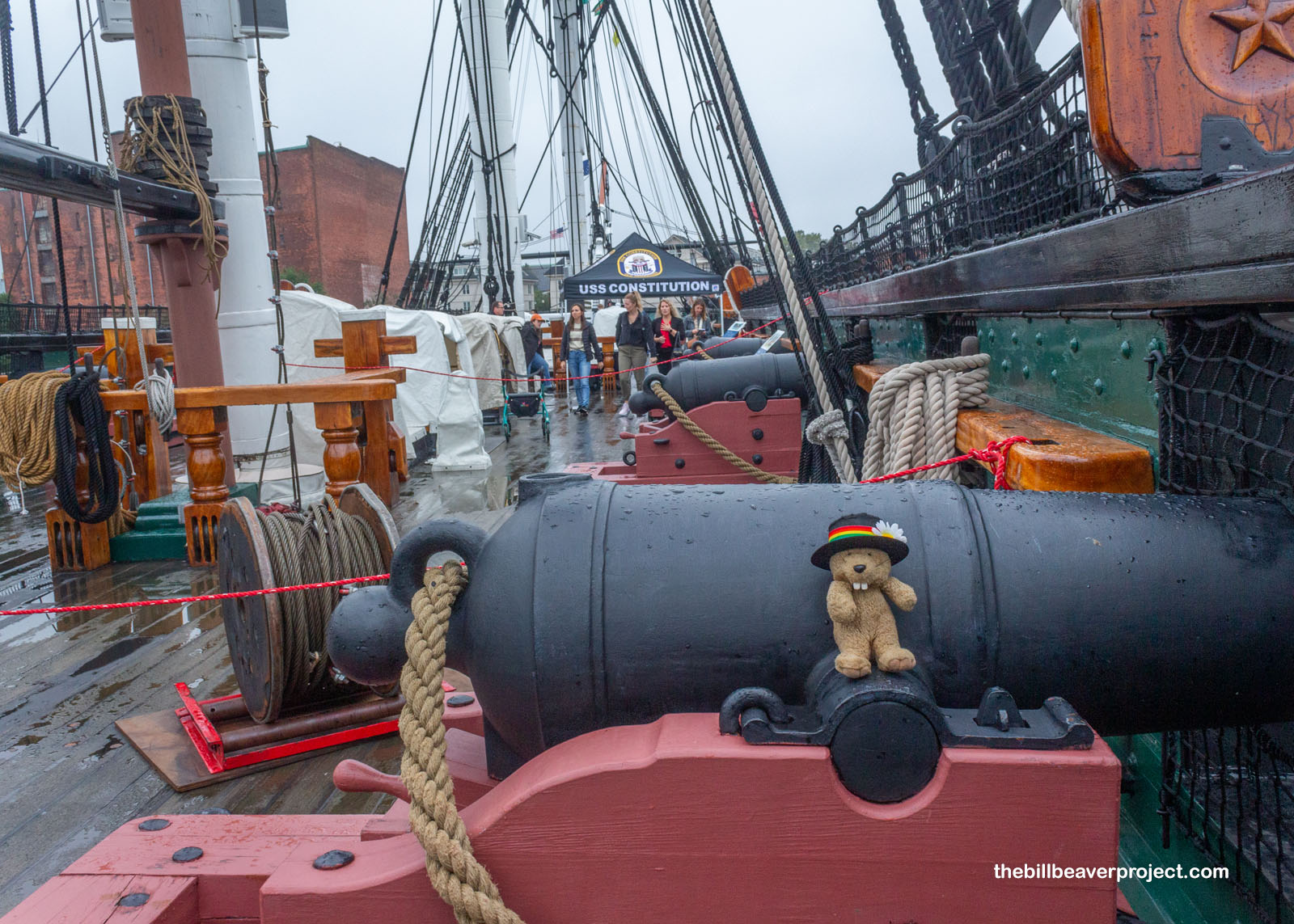 |
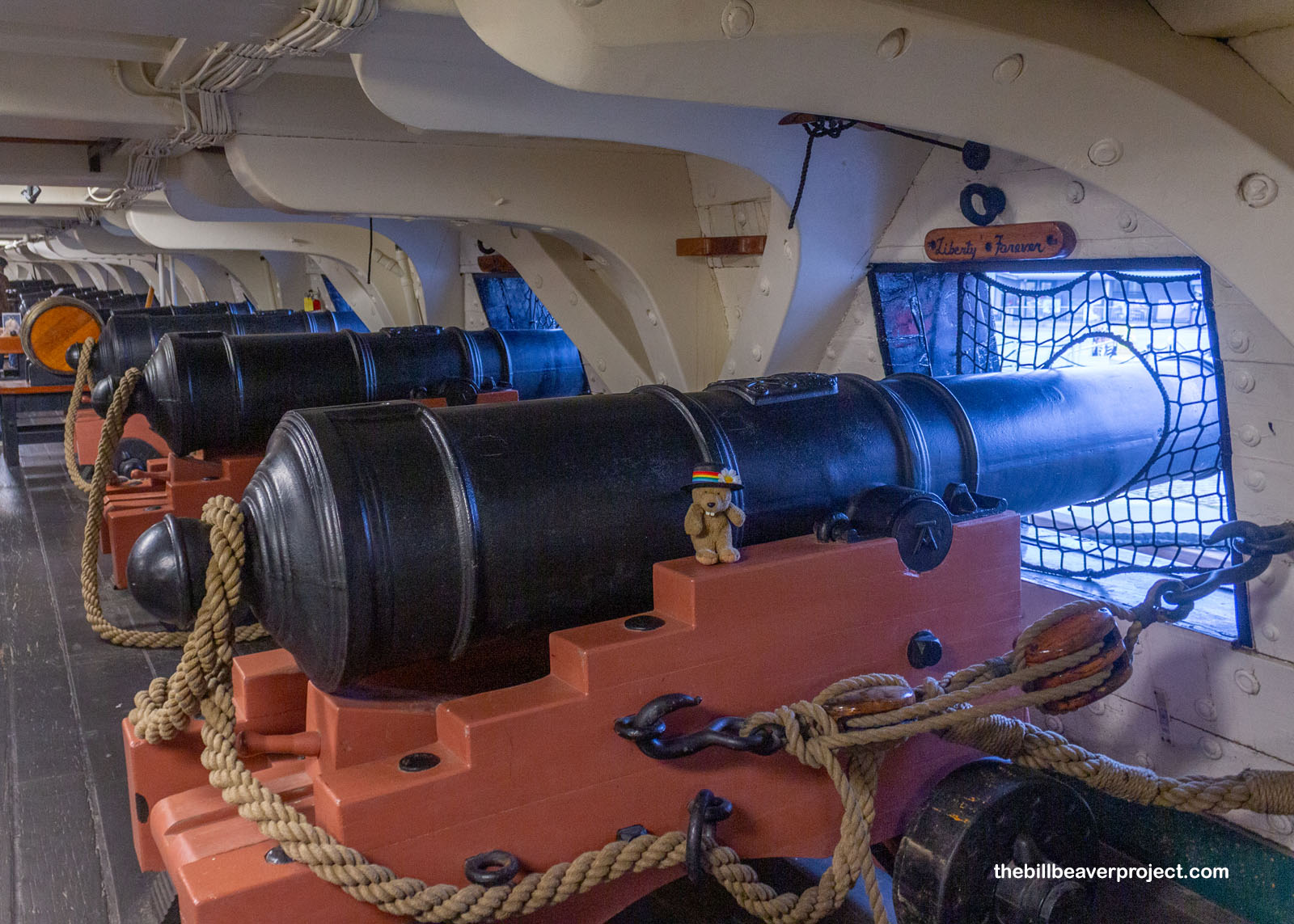 |
By now, it was starting to get dark, and I wondered if the rain was about to come back. I looked over my shoulder and could see the Bunker Hill monument, bringing this Boston adventure full circle. But in front of it was the strangest safety sign I’d ever seen (and I’ve been to China). This one advised folks to wear safety shoes, but the fellow depicted, hopping up and down, was shouting, “OUCH! It shouldn’t happen to a dog!” While I agree, I really wondered how many designers it took to come up with that. I shouldn’t criticize, though. I haven’t worn shoes of any kind since 2012!
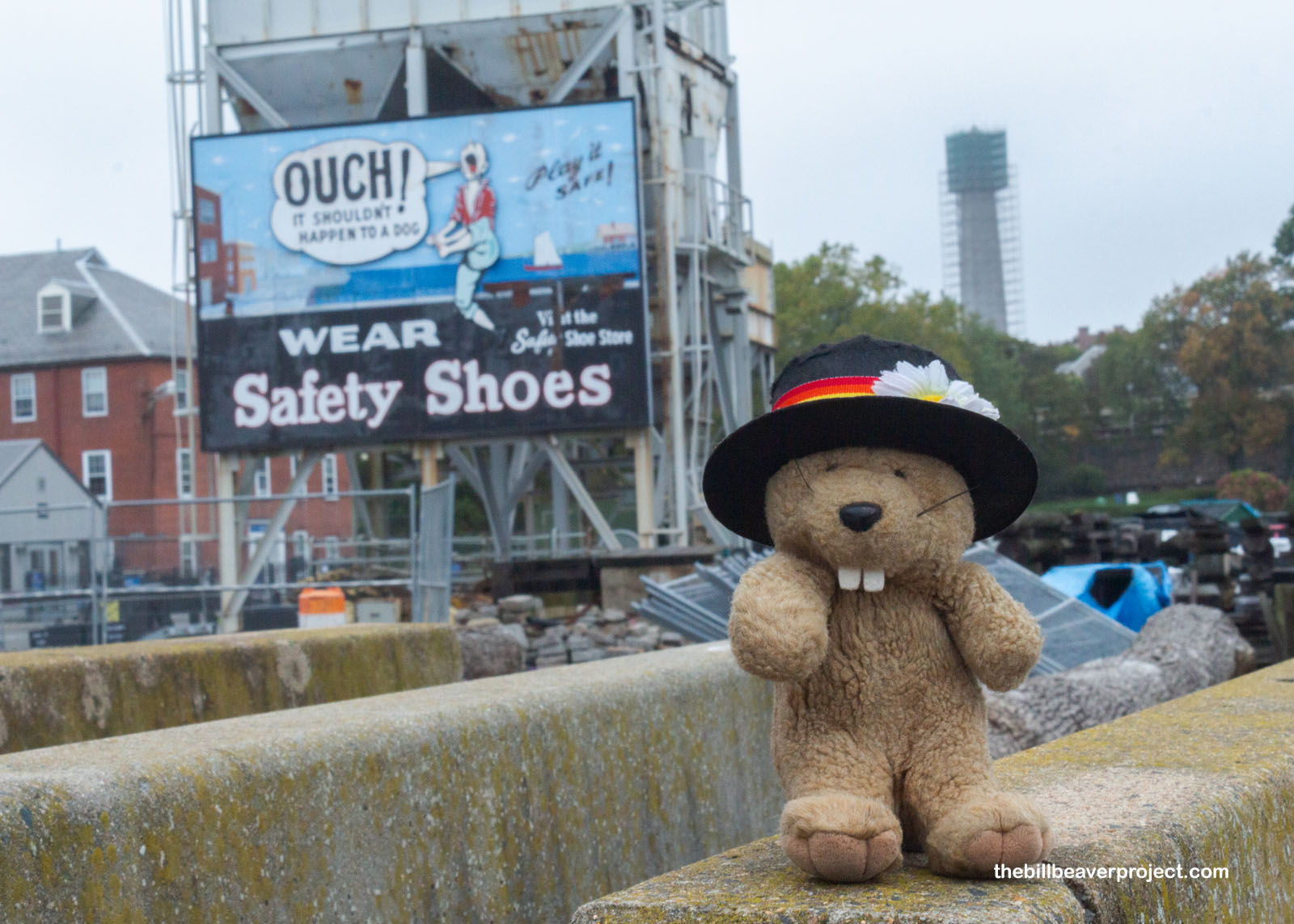 |
The museum was closing, so I returned back down the Freedom Trail to take the commuter rail back to Waltham. Whew! This weeklong adventure feels like it’s lasted half a lifetime! Tomorrow afternoon, I’m homeward bound. First, though, I’m Harvard-bound!
Meet ya in the yahd!

 Previous Day |
Total Ground Covered: 828.8 mi (1,333.9 km) |
 Next Day |
